In my previous blog post announcing that we’re heading home in May, I talked a little bit about how long-term traveling can sort of turn you into an asshole. It can make you stop appreciating the fact that the ruins you’re seeing are thousands of years old. Cathedrals start to blend together, you stop caring as much about the history of the sights you’re seeing, and you start to feel kind of like a jerk about not appreciating your travels.
We hit peak travel fatigue in Rome, epicenter of old-ass Roman shit. We spent just 3 nights there, which I think was enough for one trip. It would be so easy to spend a whole week there and totally wear yourself out with sightseeing – I think it’s better to bite off a small chunk of Rome and savor it.
Even still, we found ourselves getting pretty fatigued Sightseeing in Rome. It is a huge behemoth of a city – we walked over 10 miles each day, maxing out at 14 miles one day! To keep our sanity, we started joking about all the old-ass Roman shit surrounding us everywhere, which is where this blog post gets its name. Don’t get me wrong, we LOVED Rome and loved visiting all of its wonderful sights; we just also happen to need jokes to get us over the tourist-fatigue-hump.
We barely made a dent on Rome, but tried to hit all the most major sights. I know I’ve raved about Rick Steves’ Guidebooks in my blog posts before, but I think there’s probably no city where you’ll be happier to have a Steves’ book in hand than Rome. I hope you enjoy this old-ass Roman shit as much as we did.
The Pantheon
It’s not often anymore that an ancient site leaves me so awestruck that my jaw hits the ground and I’m at a loss for words. That is exactly what happened when we rounded a corner in Rome and the massive Pantheon came into view. There’s something incredibly magical about seeing something in real life that you’ve spent your entire life looking at just in photos. In person, the Pantheon was even more impressive than I could’ve imagined.
Because the Pantheon is free, it can sometimes be absolutely packed with a wait to even go inside! Lucky for us, we visited in February. Thank heavens for low season and small crowds.
The Pantheon was originally a Roman temple dedicated to all (pan) gods (theos), hence the name Pantheon. The structure we know today as the Pantheon was built here around A.D. 120 on the site where the original older temple (built all the way back in 27 B.C., holy smokes) once stood.
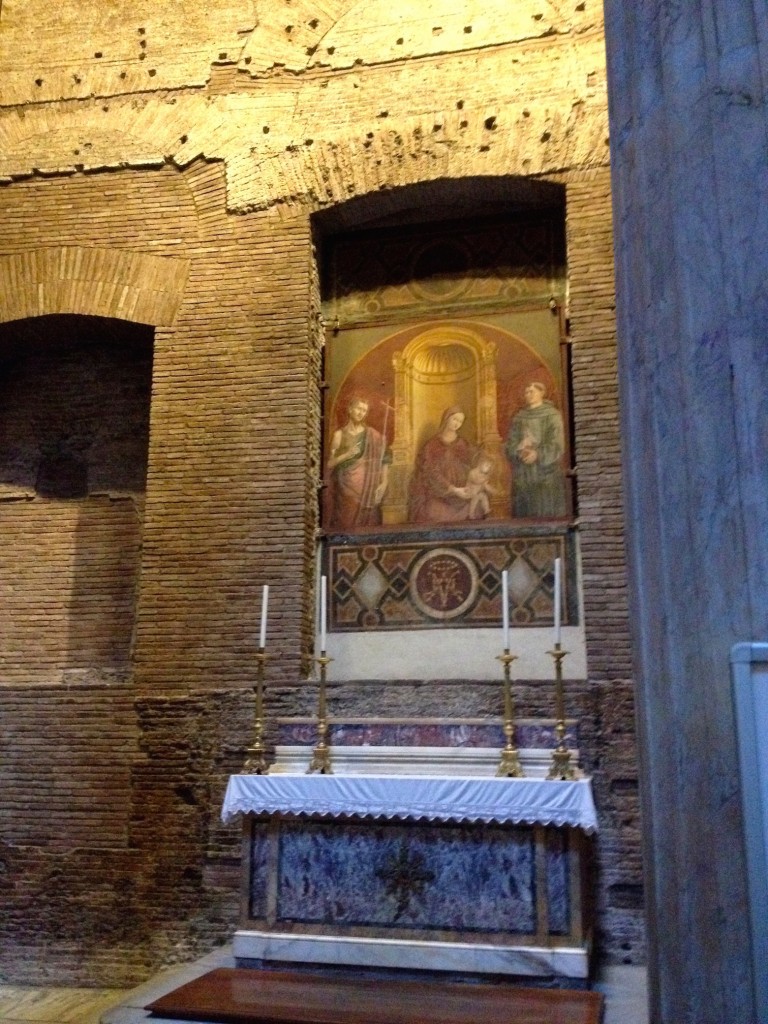
The Pantheon became a Christian Church after the fall of Rome, which saved it from “architecture cannibalism” (is that when buildings eat other buildings? kidding).
The Pantheon’s Dome was the model for the Florence’s Duomo’s famous dome, which launched the Renaissance and inspired all domes built afterwards, including St. Peter’s Basilica and the dome of the US Capitol Building.
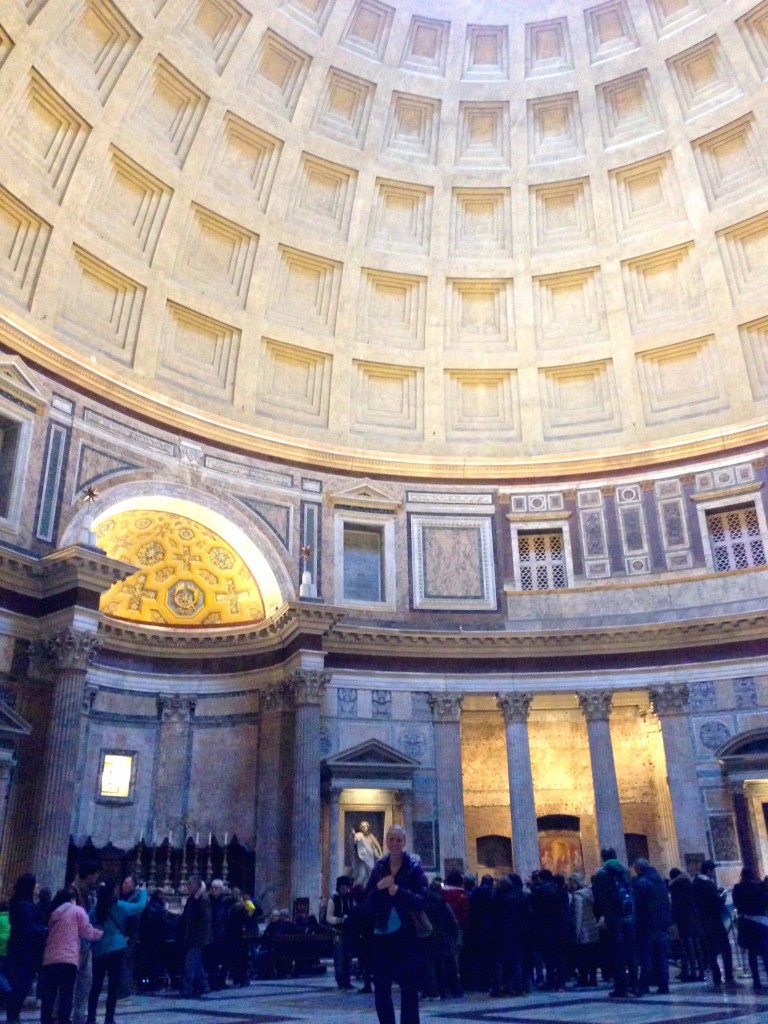
The Pantheon’s Impressive Dome is made of concrete, which the Romans invented. It gets lighter and thinner towards the top. At the base, the dome is 23 feet thick, but the top is less than five feet thick and made with a lighter-weight concrete.
The Colosseum
We unexpectedly walked past the Colosseum in the dark on our way home from dinner our first night in Rome. I can’t get over how small these Roman sights make me feel. Their sheer enormity makes me feel itty bitty, but the impressive design and crazy history makes me wonder what dent I’ll leave on history. I better get cracking on my legacy, I guess.
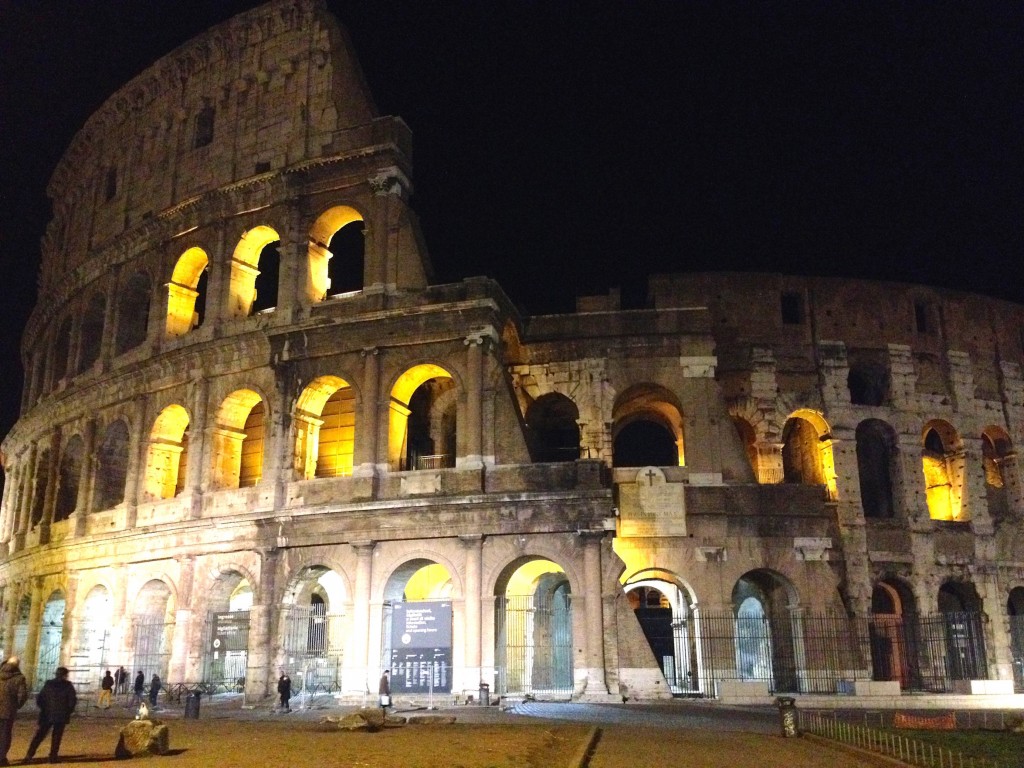
The Colosseum at Night. It closes before sunset, so there were almost no other people around. It was nice and quiet, and most importantly, there wasn’t anyone around trying to sell us anything! Hooray.
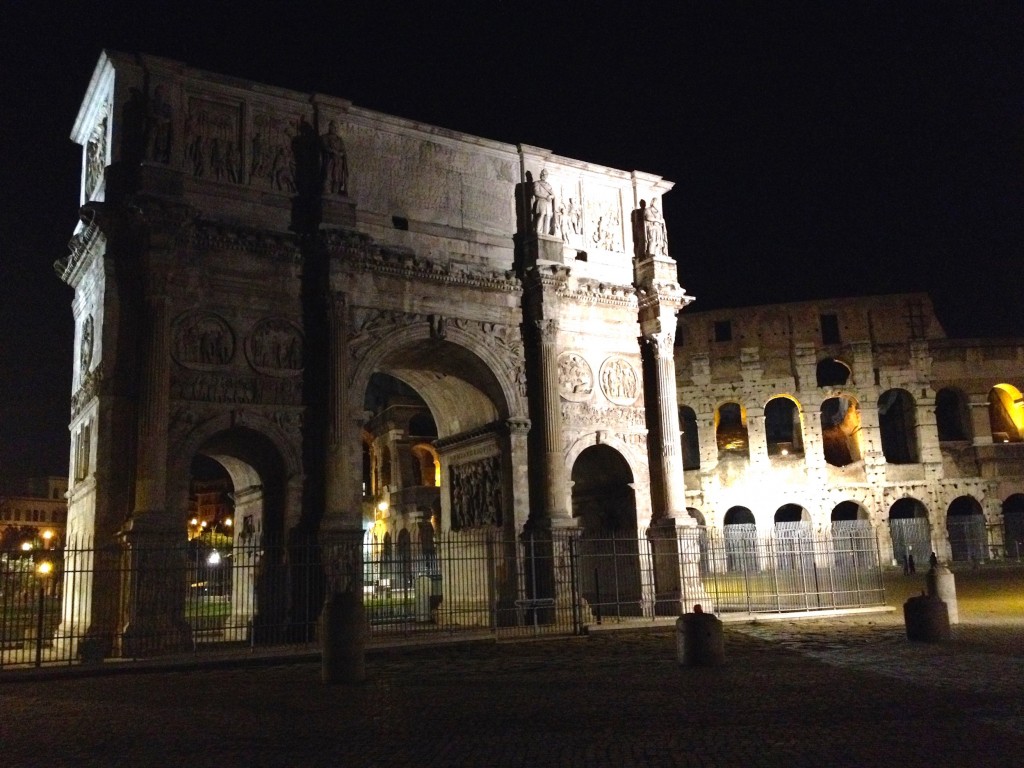
We also saw the Arch of Constantine at night – I think it’s even more beautiful lit up at night than it was during the day.
The Colosseum is almost 2,000 years old! It was built at the peak of the Roman Empire in A.D. 80, and is an impressive representation of the feats that Roman Engineers were able to achieve during that time.
We learned that the Colosseum’s real name is “The Flavian Amphitheater”; tuck that one away in your brains for trivia nights in the future. Back in the day when killing was a spectator sport, it could hold up to 50,000 screaming Romans.
- I told Kevin to stop squinting in this photo.
- And then he made this face. I hope you’re laughing as hard as I am.
The Colosseum has been damaged over the years. Earthquakes caused some of this damage, but mostly pieces were lost during the Middle Ages and Renaissance when huge chunks of stones were scavenged and carted away to build other buildings. In fact, only 1/3 of the original Colosseum structure remains, the rest has been restored.
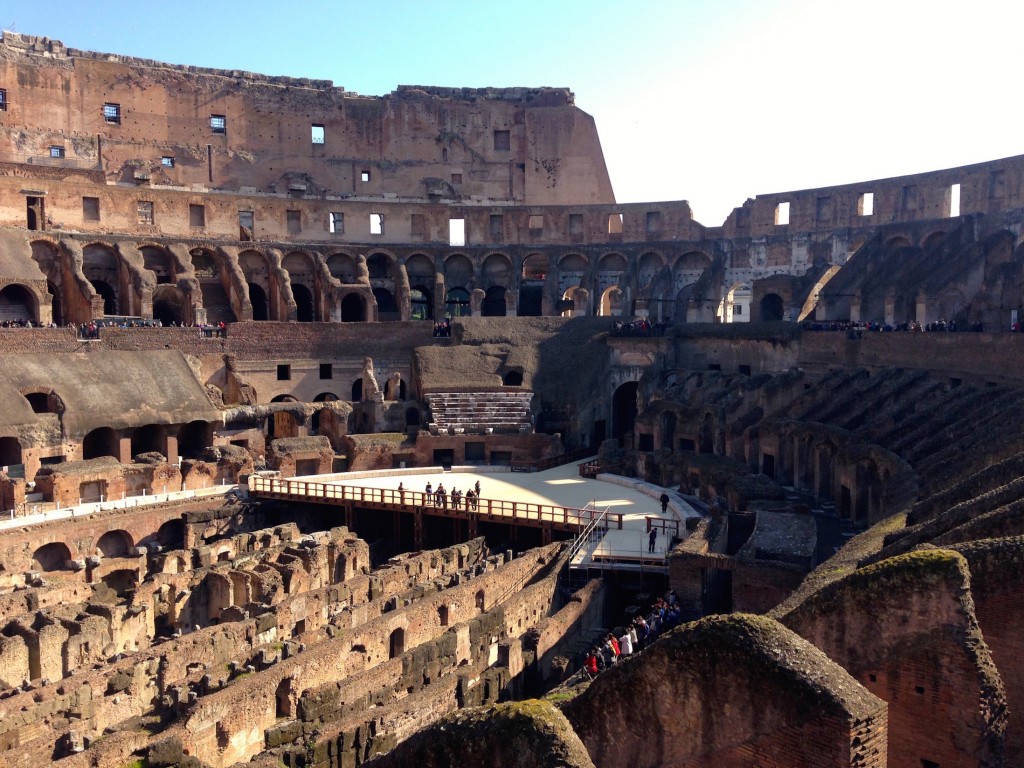
The Colosseum, where killing is a spectator sport. In this photo, you can see the underground passages where animals, prisoners, and gladiators moved around. It was covered with a wooden floor and sand when the Colosseum was actually in use. Part of the arena floor has been reconstructed in the back there to give you an idea of what it would’ve looked like.
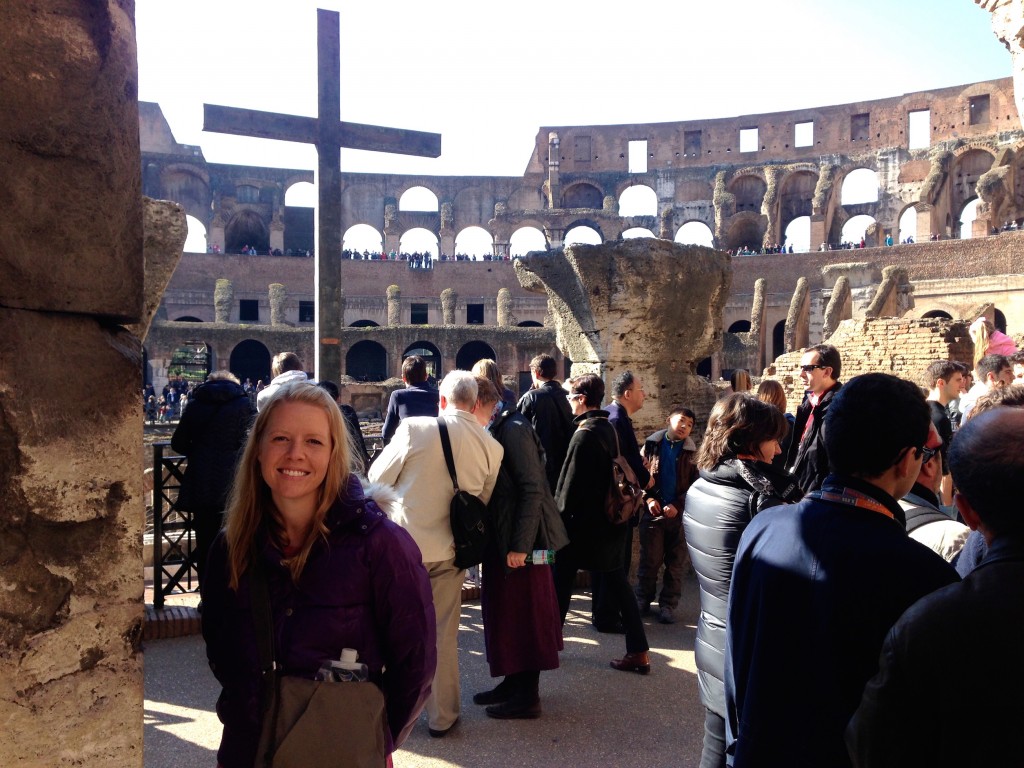
This is the Emperor’s Box, marked now with a cross. I thought that was strange given that so many people died here.
Traveler Tips: It costs 12 euro to get into the Colosseum, but that same ticket gets you into the Roman Forum and Palatine Hill. If you’re traveling in high season, it’s a good idea to go online and purchase your tickets in advance so you can skip the line. We hear that in high season the Colosseum is much less crowded in the afternoons when the temperature is at its hottest. In February, we showed up in the morning without reservations and had to wait about 25 minutes to go inside. If the line is really long, head over to The Roman Forum, where the line is usually shorter to buy tickets! See the Forum first, then come to the Colosseum and use the same ticket to enter later.
The Roman Forum
This is it, the epicenter of old-ass Roman shit. This is where Rome was born and bred, the place where all the magic happened It was the political, religious, and commercial center of Rome. According to my Rick Steves’ guidebook, it’s “arguably the most important piece of real estate in Western civilization.” Armed with my Kindle, we followed Rick’s walking tour through the Roman Forum.
First we saw the impressive Arch of Titus, with a less than happy background story. The arch commemorates the Romans’ victory over Judaea (Israel) in A.D. 70. They enslaved and brought back 50,000 Jews and forced them to build this arch and the Colosseum.
I also thought that the Temple of Antoninus Pius and Faustina (built in A.D. 138-161) had an interesting backstory, too. After Rome’s downfall, many of the buildings here in the Forum were pillaged and scavenged to build other new structures elsewhere in Rome. In the photo below, you can see diagonal cuts on the columns, marks left by an unsuccessful attempt to use rope and vinegar to cut through the columns and take them away!
The Temple of Antoninus Pius and Faustina was used as a church starting in 1550, during the time of Michelangelo. The green door was actually at street level during those days! Excavations in the 1800s revealed the lower staircase.
While at the Forum, we also learned the interesting story about the Vestal Virgins. These women were selected at the young age of 10 to hold this prestigious position, and were responsible for keeping the sacred flame in the Temple of Vesta burning at all times. It was considered an honor to be selected to be a Vetsal Virgin – they were highly regarded by all Romans and even had their own private box at the Colosseum. The Virgins were required to serve a 30-year term. If they served faithfully, they received a huge dowry and could marry. If they didn’t live up to the Virgin name, they would be ridiculed in a parade (strapped to a funeral car, no less) then buried alive! Usually, the no-longer-a-virgin was given a loaf of bread and a candle before they locked her down in the crypt. I can’t decide if that makes it more or less torturous?
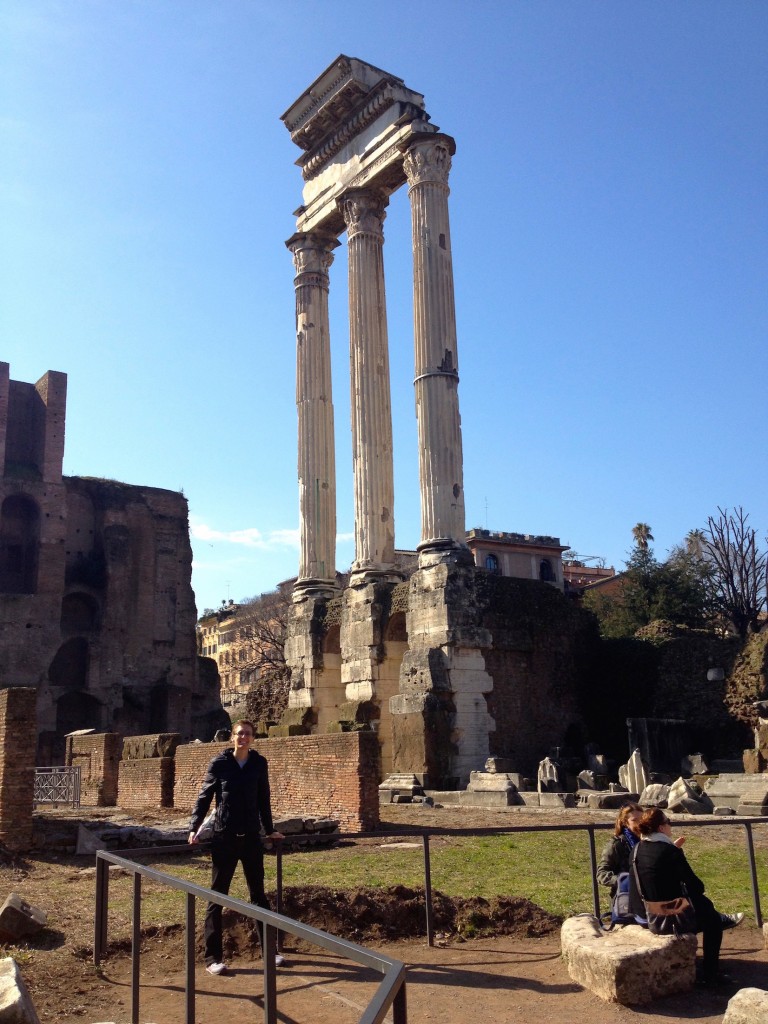
These three columns are all that remain of the Temple of Castor and Pollux, which was built in the fifth century B.C. to commemorate a Roman victory.
Somewhere near the Arch of Septemius Severus (pictured below with Kevin), we realized that J.K. Rowling pulled a bunch of names for Harry Potter characters out of Roman History. The other name we recognized in the books is Remus. In roman mythology, Remus was abandoned by his mother, then rescued and raised by a she-wolf. (Now it makes perfect sense that Remus was the name of a werewolf in Harry Potter.)
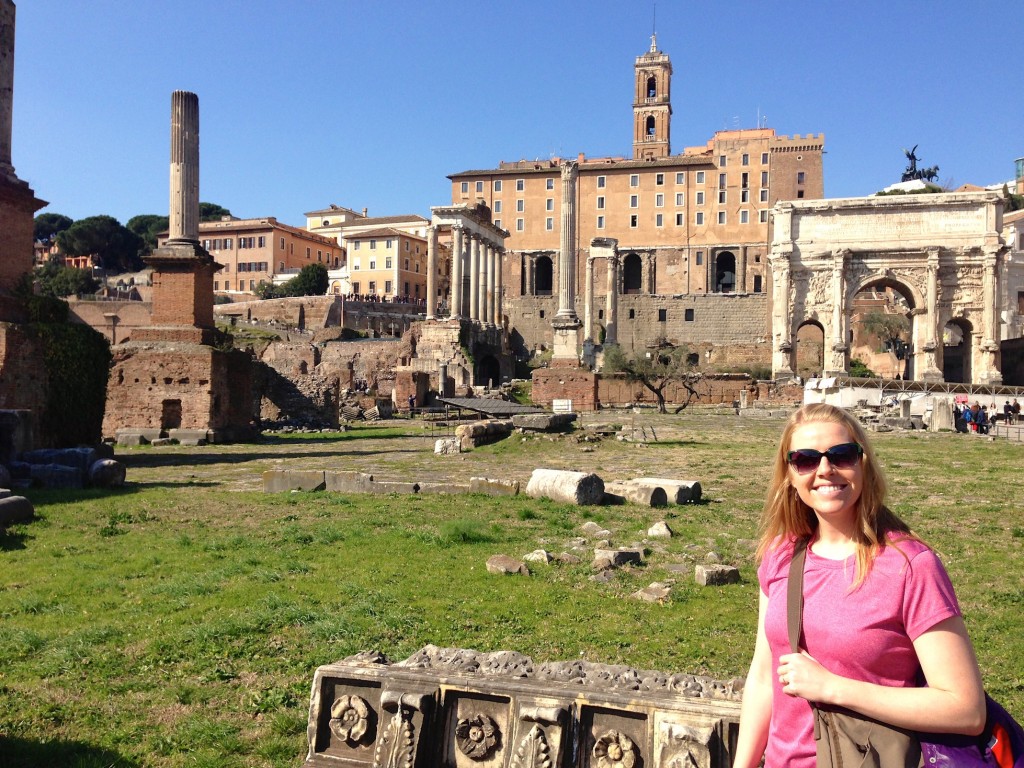
In the very center of this photo behind me is the Column of Phocas. In A.D. 608, the Byzantine Empire gifted this column to the fallen Roman empire to commemorate the conversion of the Pantheon into a Christian Church. It was sort of a last-nail-in-the-coffin gesture. I like to think this column represents their middle finger.
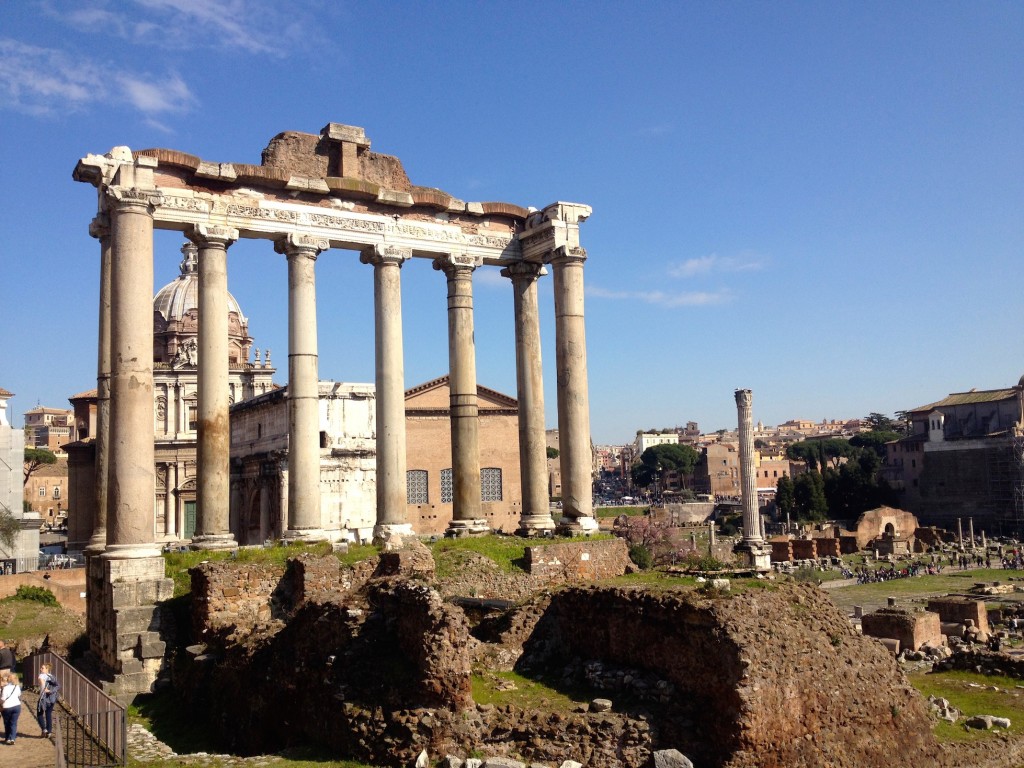
These 8 columns are what remains of the Temple of Saturn, which was the Forum’s oldest temple (built in 497 B.C.).
I can’t even fathom how long ago 497 B.C. was – it’s hard to get a grip on how old this stuff is.
The Vatican Museum
Kevin and I aren’t huge museum people. But knowing that the Vatican Museum is one of the top handful of museums in all of Europe, we knew it was a mandatory stop. We heard that 3pm is the least crowded time to go (it closes at 6pm), and when we showed up at that time there was absolutely no line whatsoever to get in! Victory!
Sadly, no photos are allowed of the Sistine Chapel. Here is a consolation photo of Raphael’s School of Athens Fresco:
Some of our other favorite photos from the Museum:
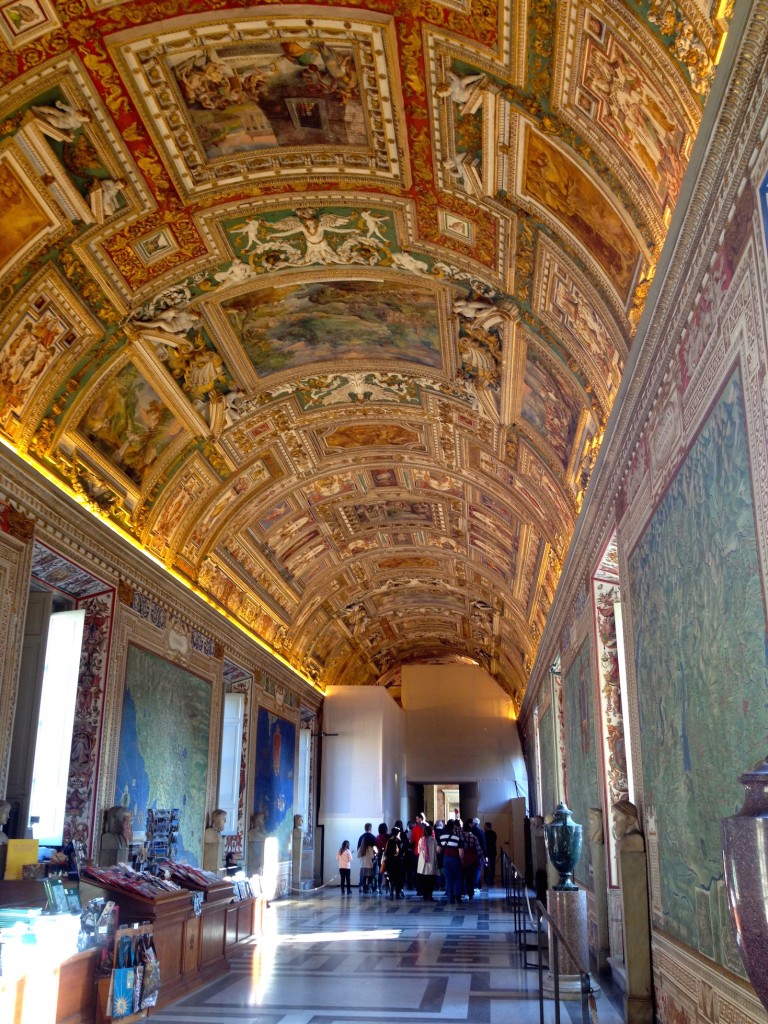
At the Vatican Museum, even the ceilings are considered art. Here’s an impressive three dimensional ceiling.
Our favorite part was the hall of statues next to the courtyard. I like to come up with creative things that the statues could be thinking, based on their body positions and facial expressions. I captioned some of the photos below with some of my ideas…
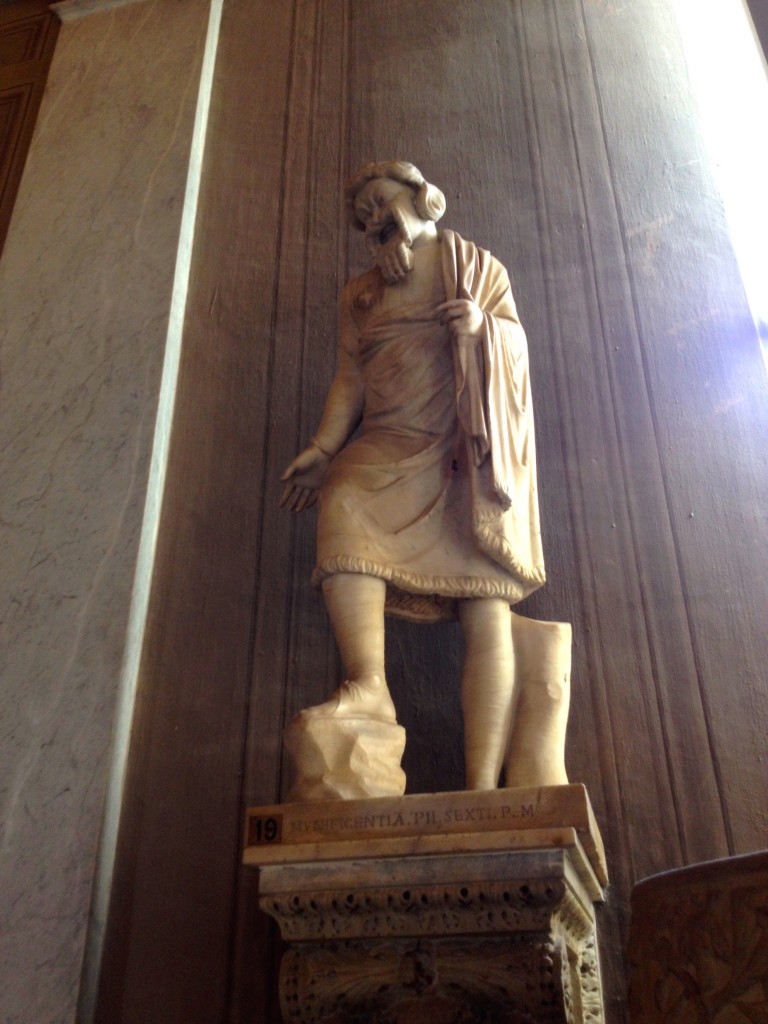
I loved this one, because I’m pretty sure he’s just laughing hysterically. At the very least, he’s a jovial man with an awesome beard.
And now the word is out. Kevin and I go to museums and spend our time giggling at the statues. Can you believe we’re full fledged adults?!
St. Peter’s Basilica
After hitting up the Vatican Museum, we took the secret hallway out of the Sistine Chapel over to St. Peter’s Basilica. This exit is marked “groups only”, so we tagged along with a tour. I should tell you that the tour was an African American group from the States, and it’s possible that we stuck out, slightly. It actually was sort of hilarious, but the guards let us right past anyway.
St. Peter’s is billed as the most impressive church on Earth, and it’s the largest church in the world. It is absolutely massive, with an incredible dome, an impossibly ornate Altar by Bernini, and it even has its own Michelangelo sculpture. St. Peter’s is so big that birds roost inside; in addition to the birds, it can hold up to 60,000 standing people during worship services!
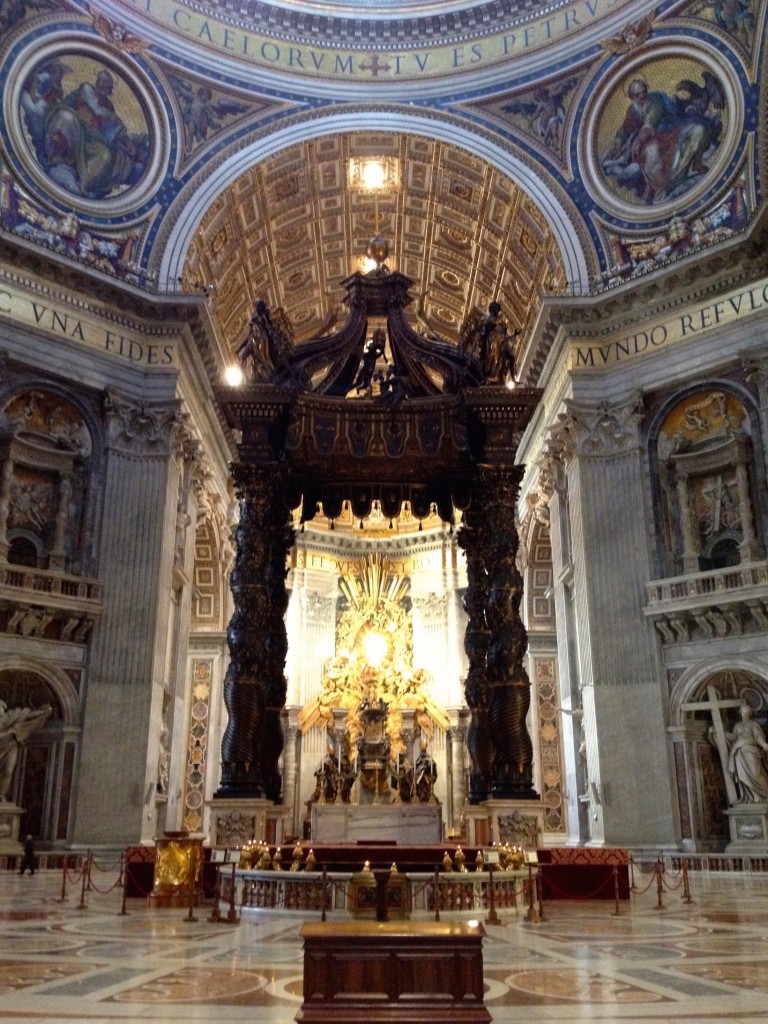
Bernini’s Bronze Canopy. It looks small in such a huge space, but this thing is seven-stories tall!!
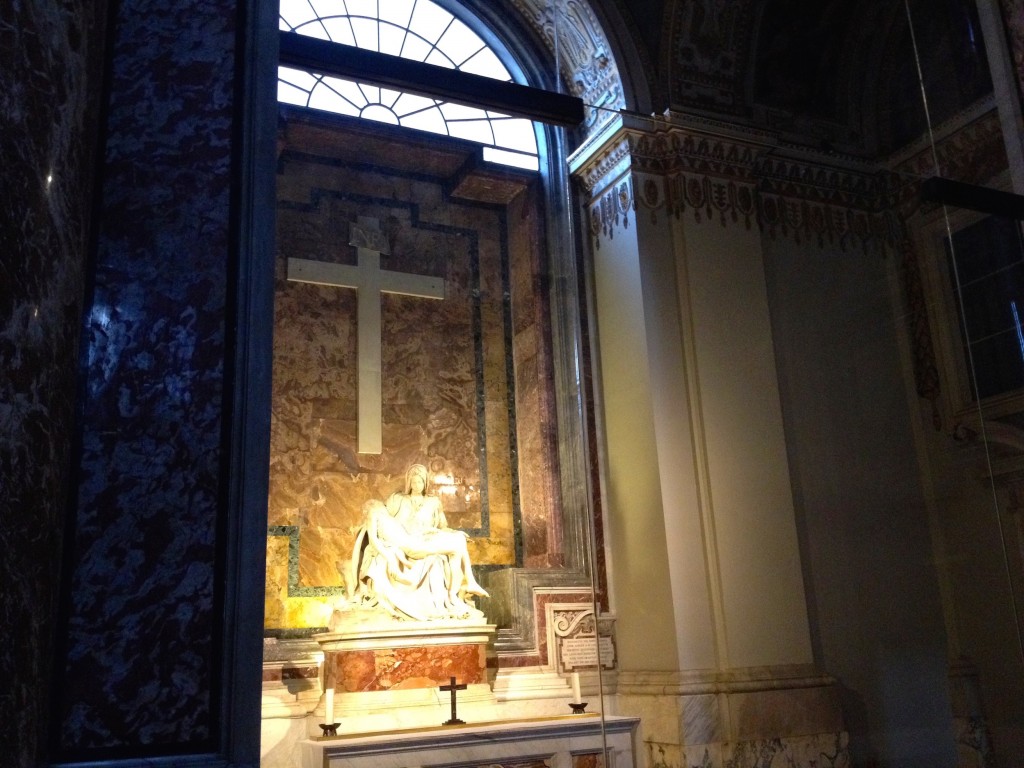
Michelangelo’s famous Pietà sculpture, depicting Mary with the body of Christ taken down from the cross. He sculpted this when he was just 24 years old.
Rome’s Many Piazzas
One of the best things about Rome is just walking around the city exploring its many different Piazzas. Each one has a completely different vibe. Some have open air markets, some have street vendors and musicians, and some have protests and riots, but all of them are great places for people watching!
Piazza di Spagna and the Spanish Steps
Piazza di Spagna is just a great place to hang out. Its famous Spanish Steps are one of the best spots in Rome to grab a takeaway Gelato and do some serious people watching.
Perched on the steps, you’ll get to watch the locals hang out and chain smoke and you’ll also have a fun view of the Sinking Boat Fountain.
If you’re unlucky, you may stumble upon a footbol-game-induced riot near the Spanish Steps. When we walked through Piazza di Spagna after the football riots on February 19th, the ground was sticky with beer and covered with broken beer bottles, and the beautiful fountain was completely trashed:
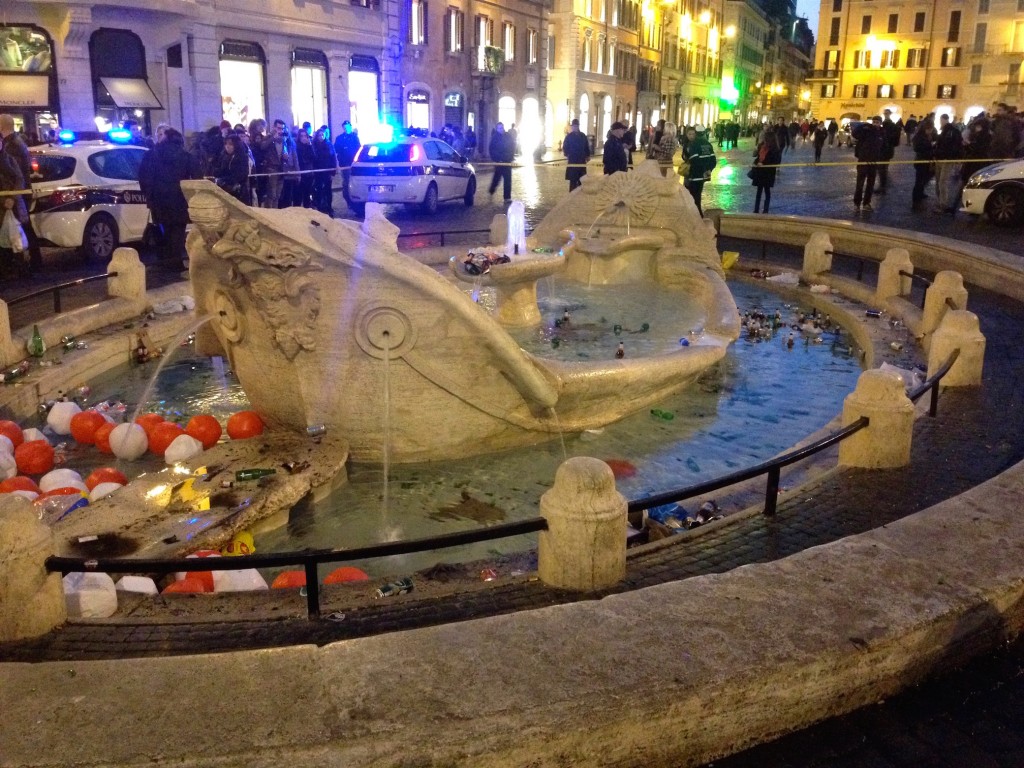
The Sinking Boat Fountain after a soccer match between the A.S. Roma football club and the Dutch Feyenoord Soccer Club.
Piazza Navona
This square was originally a racetrack in A.D. 80! It’s fun to stand in the square and imagine chariot races that happened here so many years ago. In the 1800s, Rome would flood this square with water to cool off the neighborhood – isn’t that nuts?! Today, Piazza Navona is home to the massive Four Rivers Fountain, and is filled with cafes, artists, and street musicians.
Campo de’ Fiori
Easily my favorite piazza in all of Rome was Campo de’ Fiori, which literally means Field of Flowers. This neighborhood has a much more bohemian vibe than other areas of Rome, which probably has a lot to do with centuries of unplanned urban development in this area. The charming ramshackle buildings make a fun backdrop for the square – some are even built right into the old outer wall of ancient Rome’s Theater of Pompey!
Aside from the hodgepodge buildings, this neighborhood is also known for being free spirited, and it’s not out of the ordinary to come across anti-authoritarian protests. In fact, there was a demonstration near the Giordano Bruno statue when we first visited!
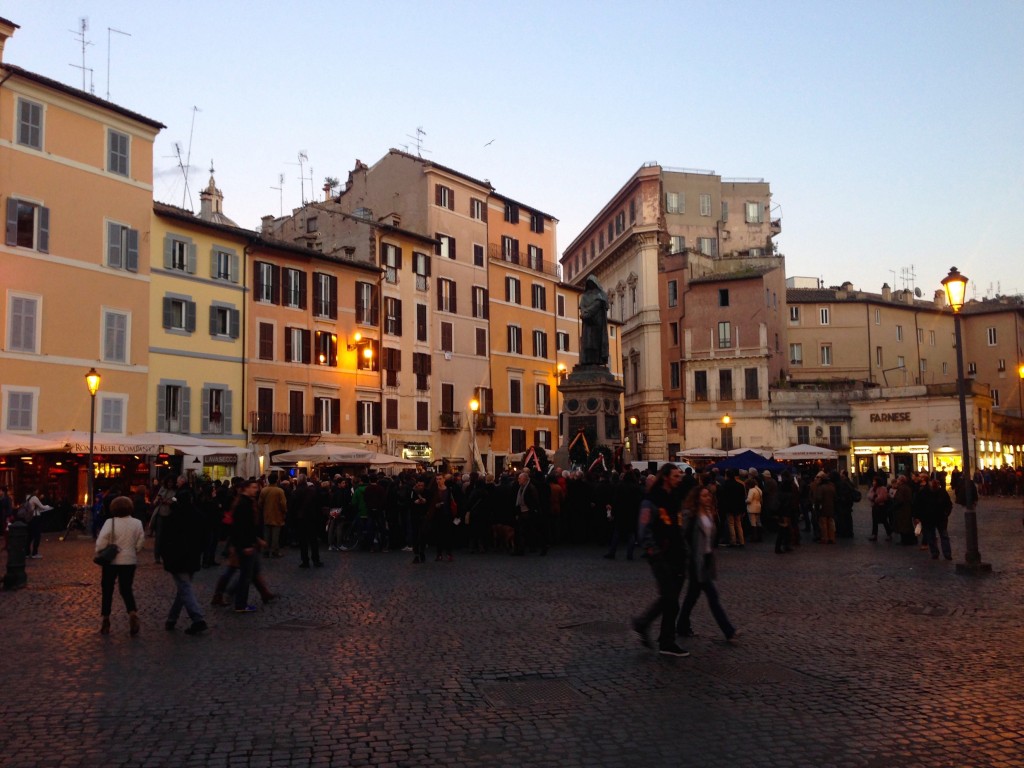
Giordano Bruno was tried and found guilty of heresy by the Roman Inquisition because of his denial of several core Catholic doctrines. He was burned at the stake in this square in 1600, where a statue honoring him now stands.
Campo de’ Fiori also has a produce market in the mornings, and there are always flower vendors around!
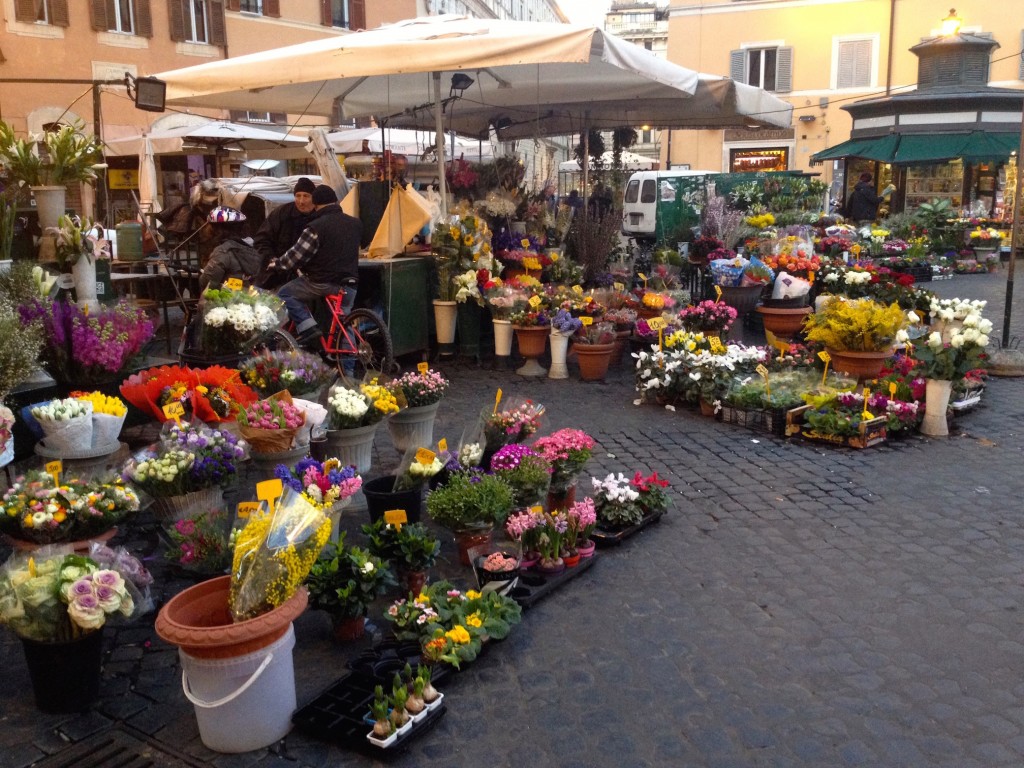
There are many Flower Vendors at Campo de’ Fiori, appropriate for a square whose name means Field of Flowers.
Piazza del Popolo
Do you feel like watching the sun set over St. Peter’s Basilica? Head over to the viewpoint at Piazza del Popolo for the best views in town:
Other Rome Sights
The Trevi Fountain
I’ve been raving about traveling during low season. Want to know why it’s sometimes a bummer to be here in February? Take one look at the Trevi fountain and you’ll know:
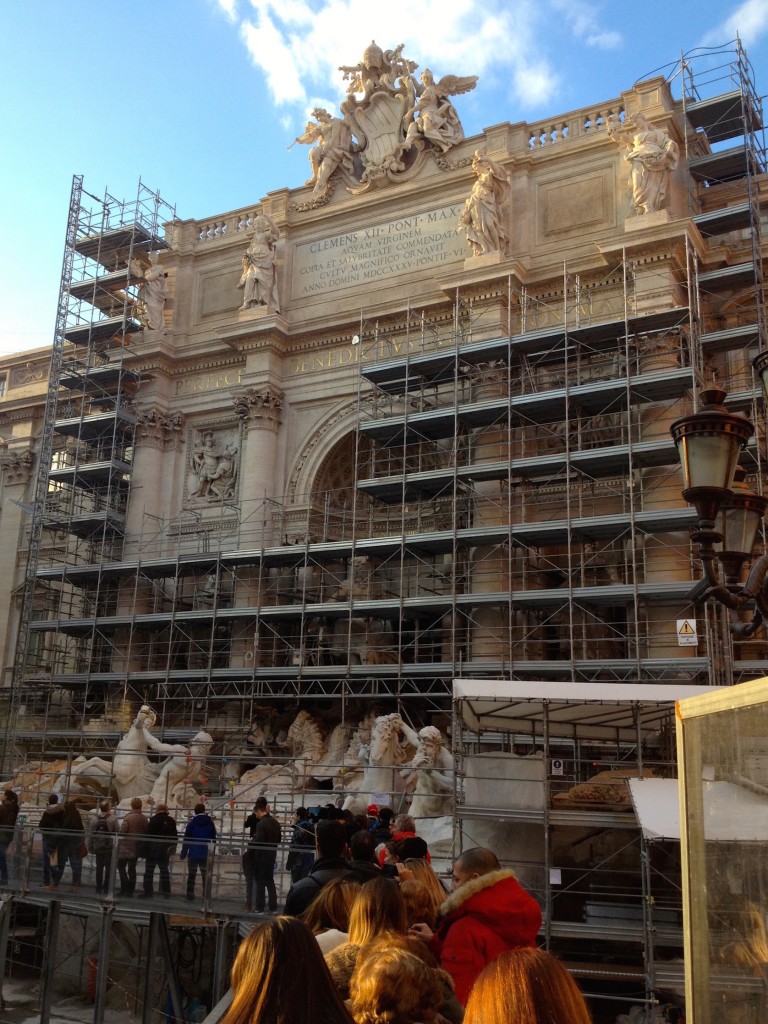
Completely dry, and almost fully covered by scaffolding! We avoided the crowds but missed out on the waterworks.
Church of San Luigi dei Francesi
If you’re into churches or art, this freebie is definitely worth the stop! The Church of San Luigi dei Francesi is near Piazza Navona and has a beautiful interior. There are frescoes painted by Domenichino, but the church is most famous for its Baroque paintings by Caravaggio.
- Beautiful Church
- I’m such a sucker for organ pipes.
- The ceiling was beautiful!
- Pipes. Yes.
We Want to Hear from You!
Have you visited Rome? What was your favorite site? Leave us a comment and let us know!
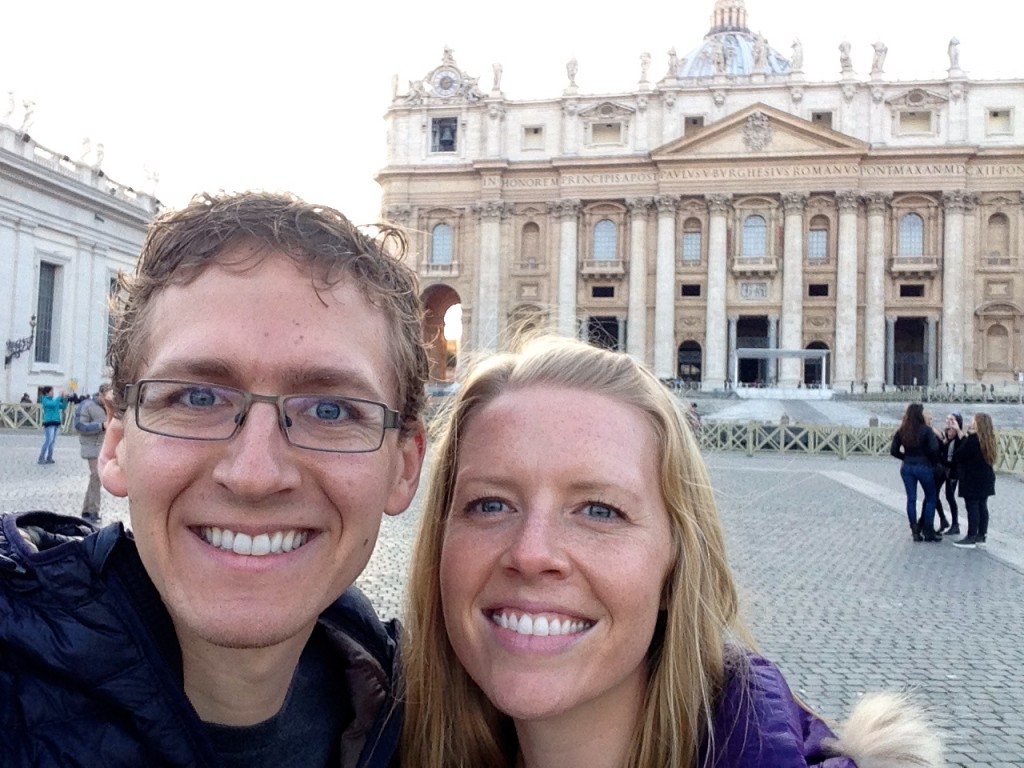
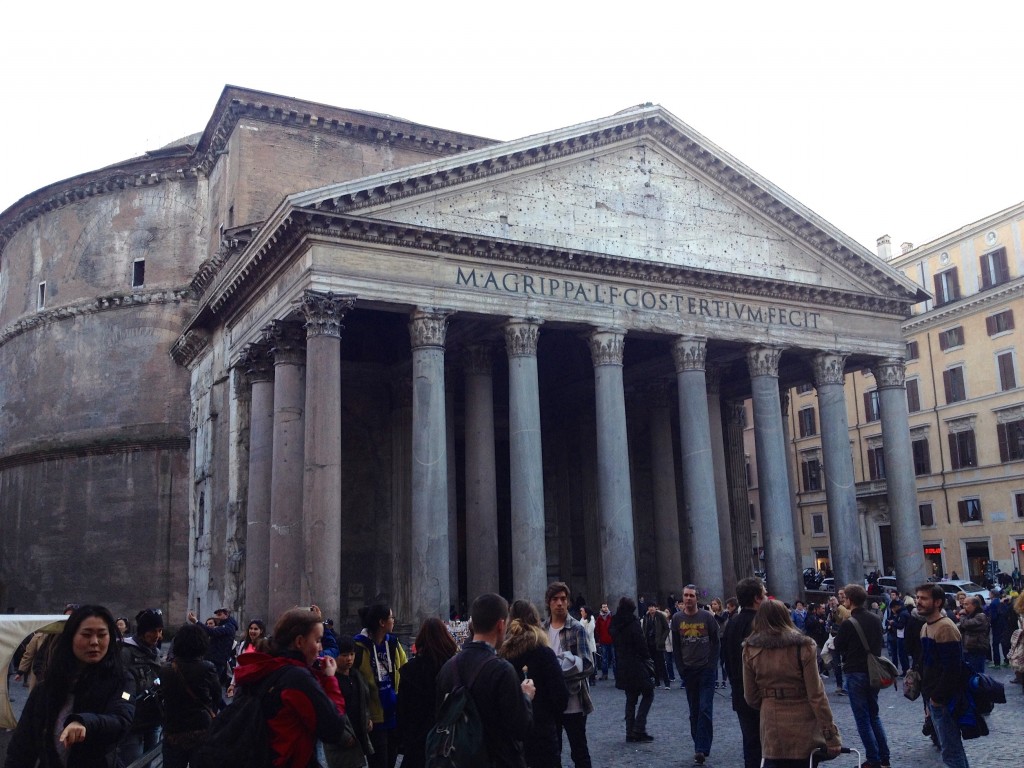
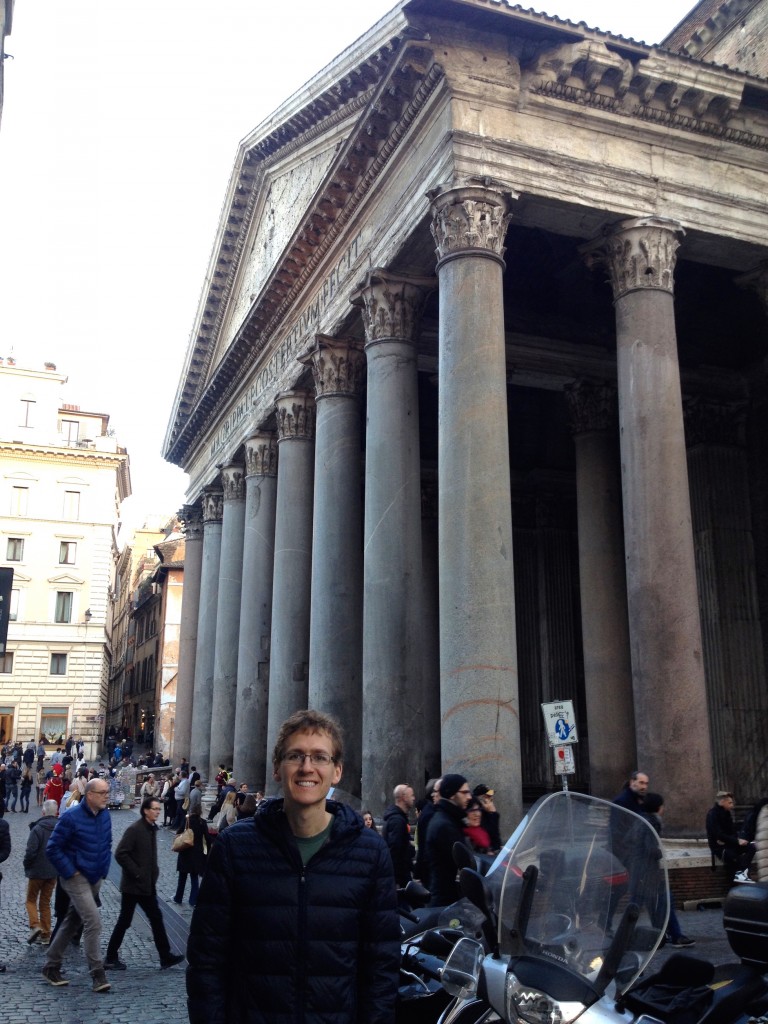
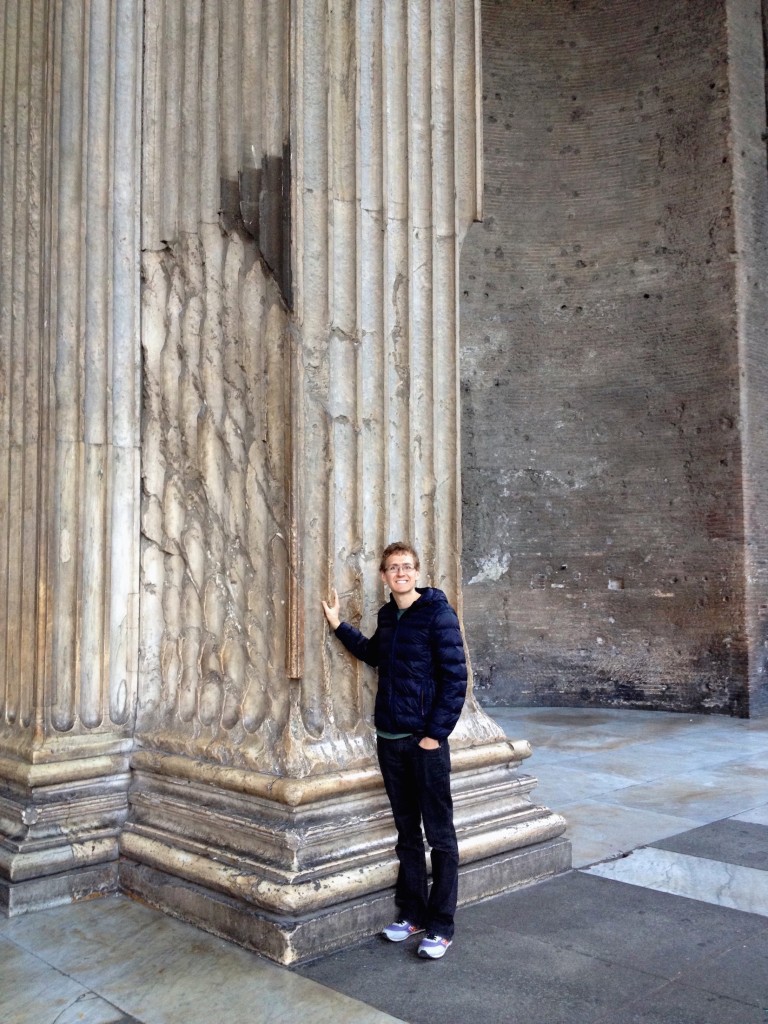
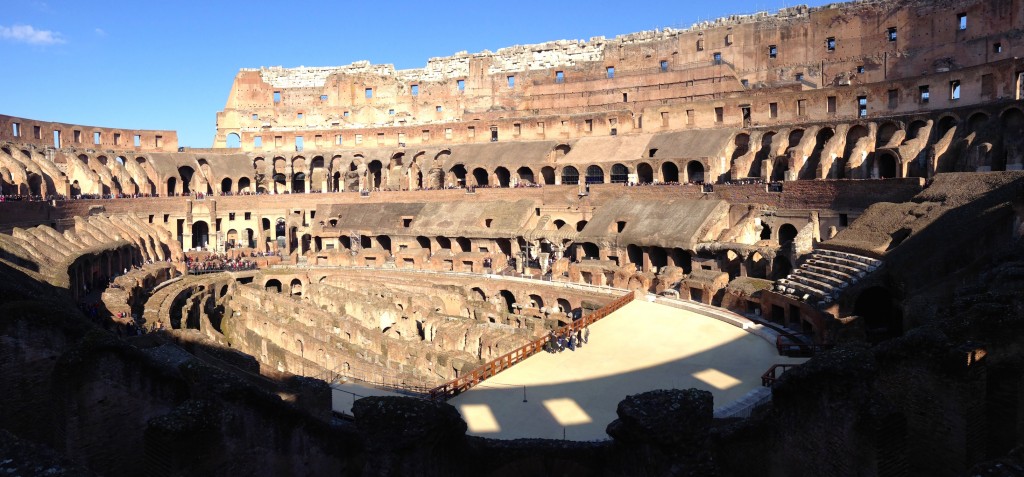
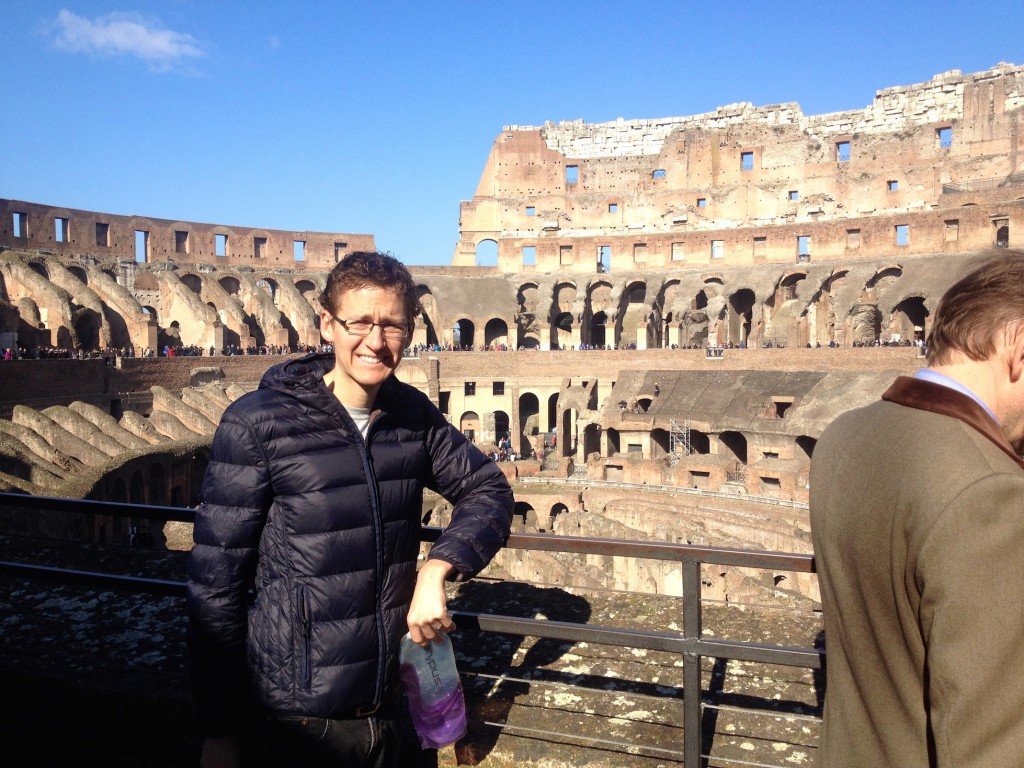
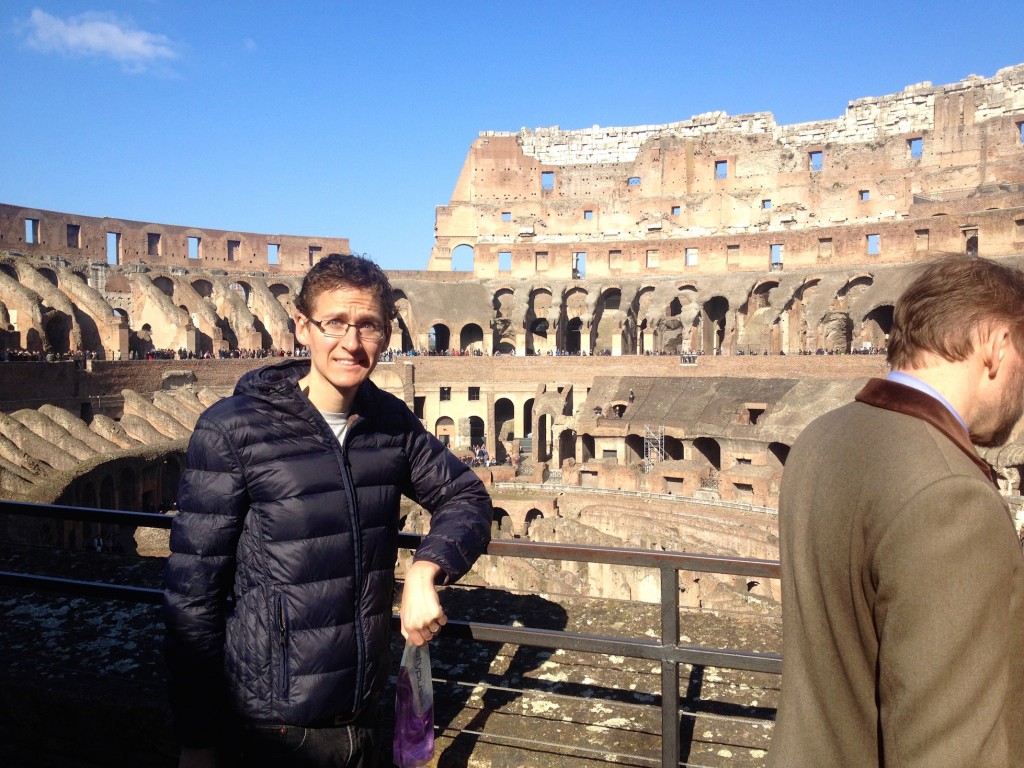
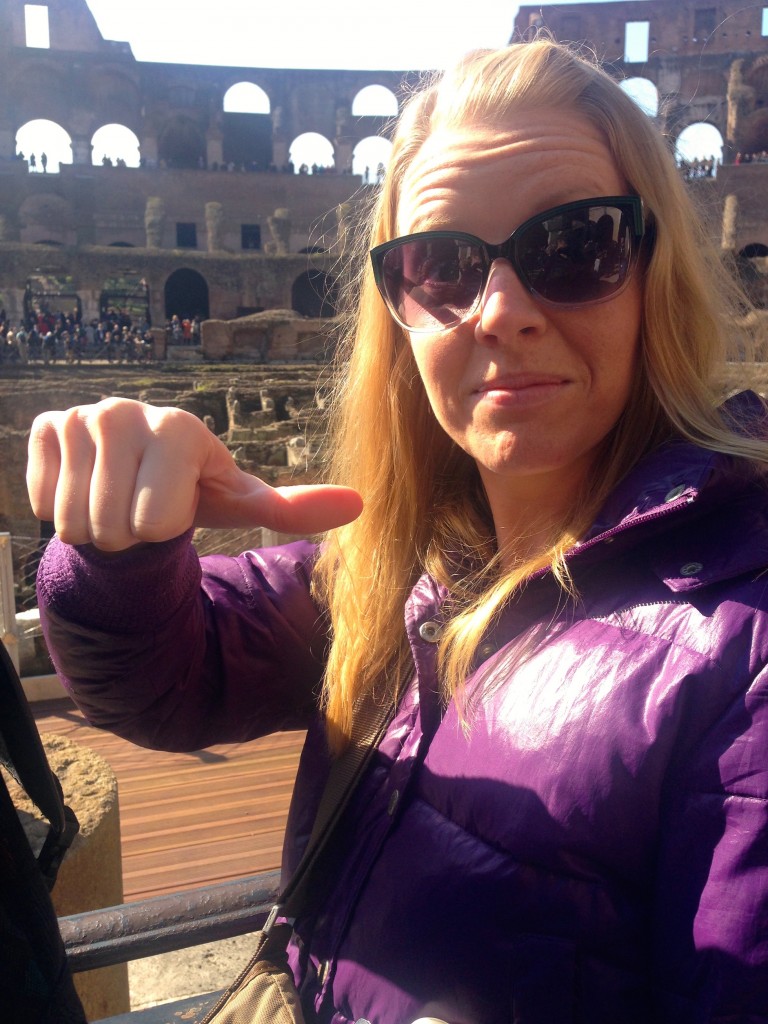
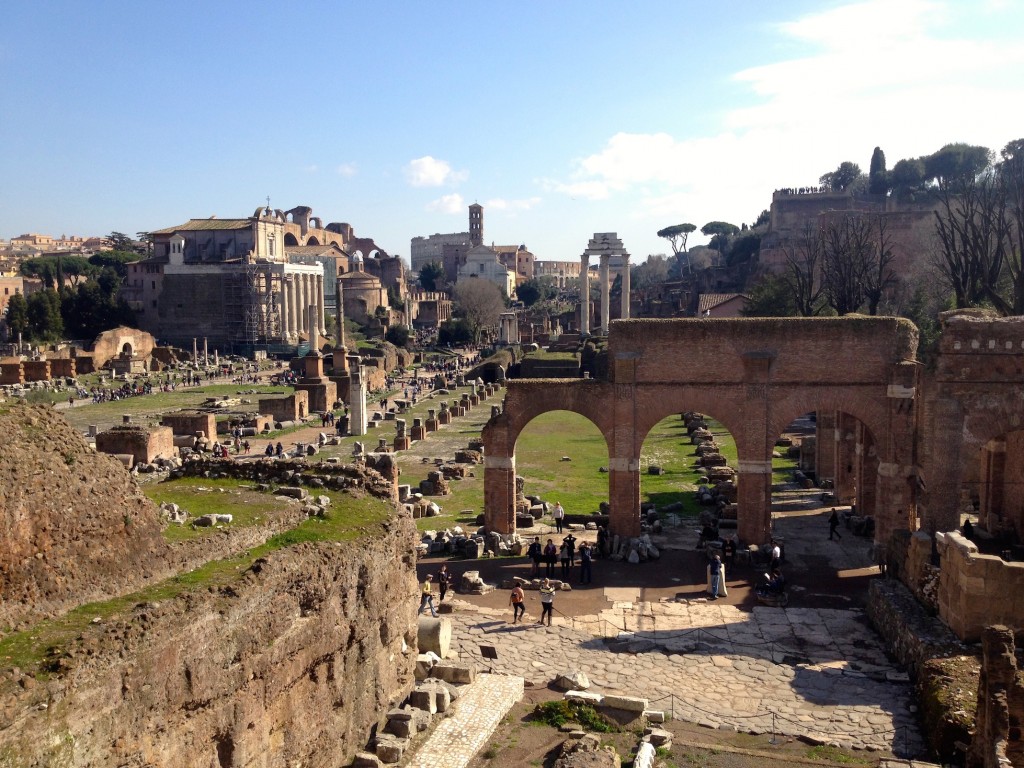
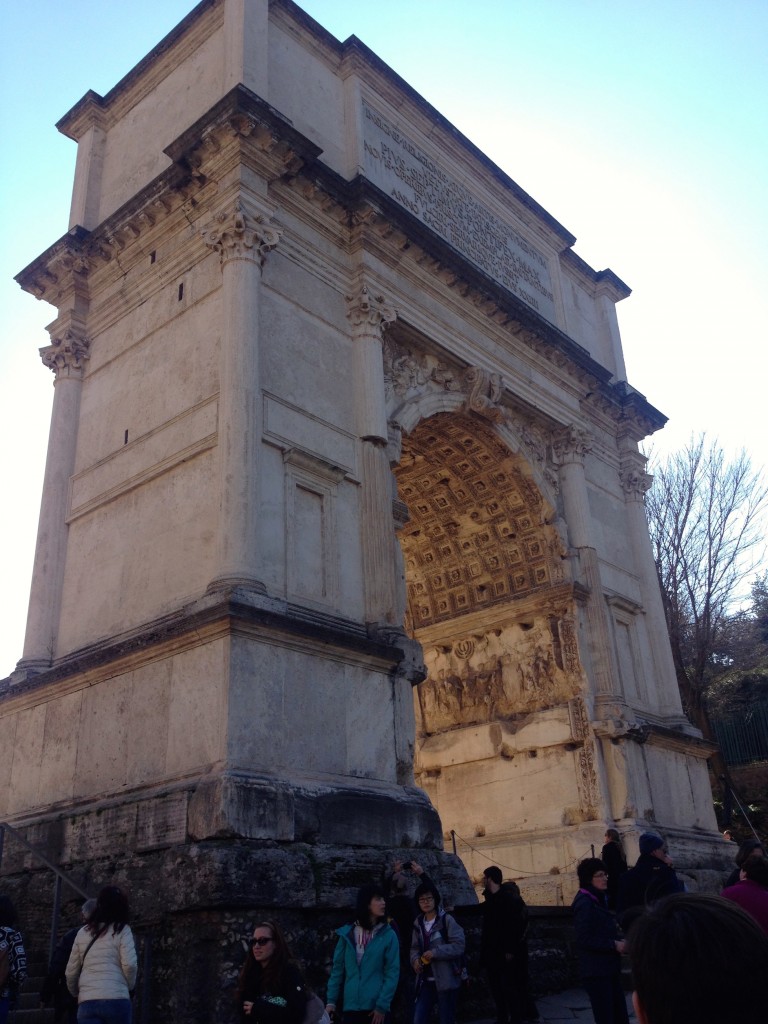
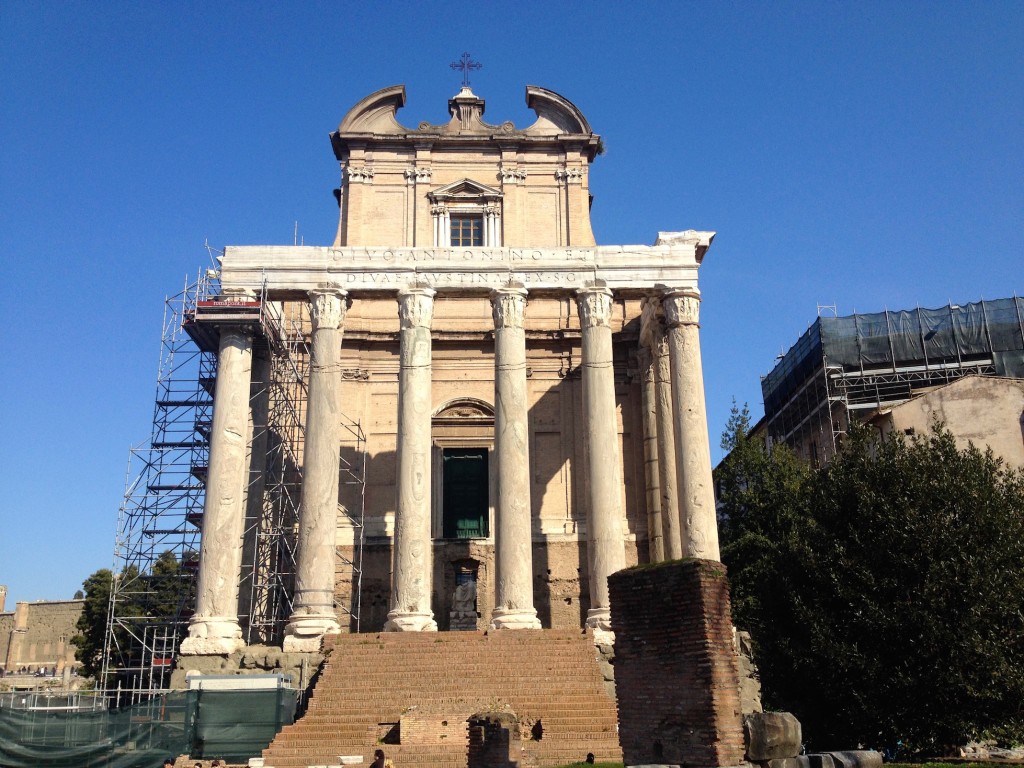
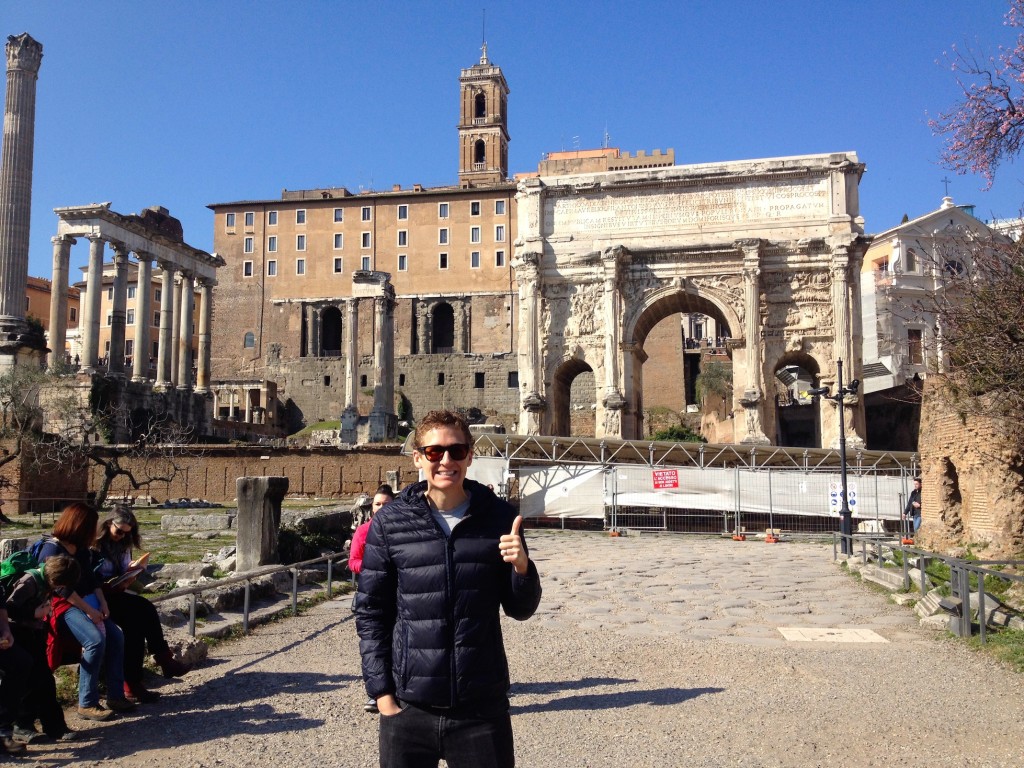
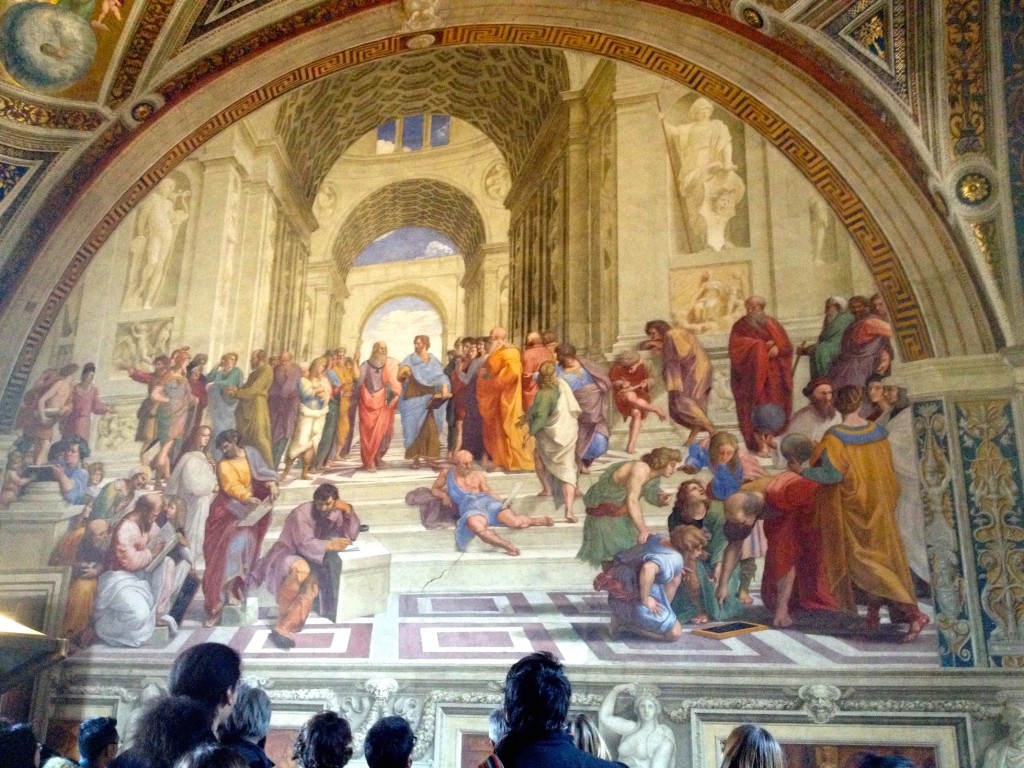
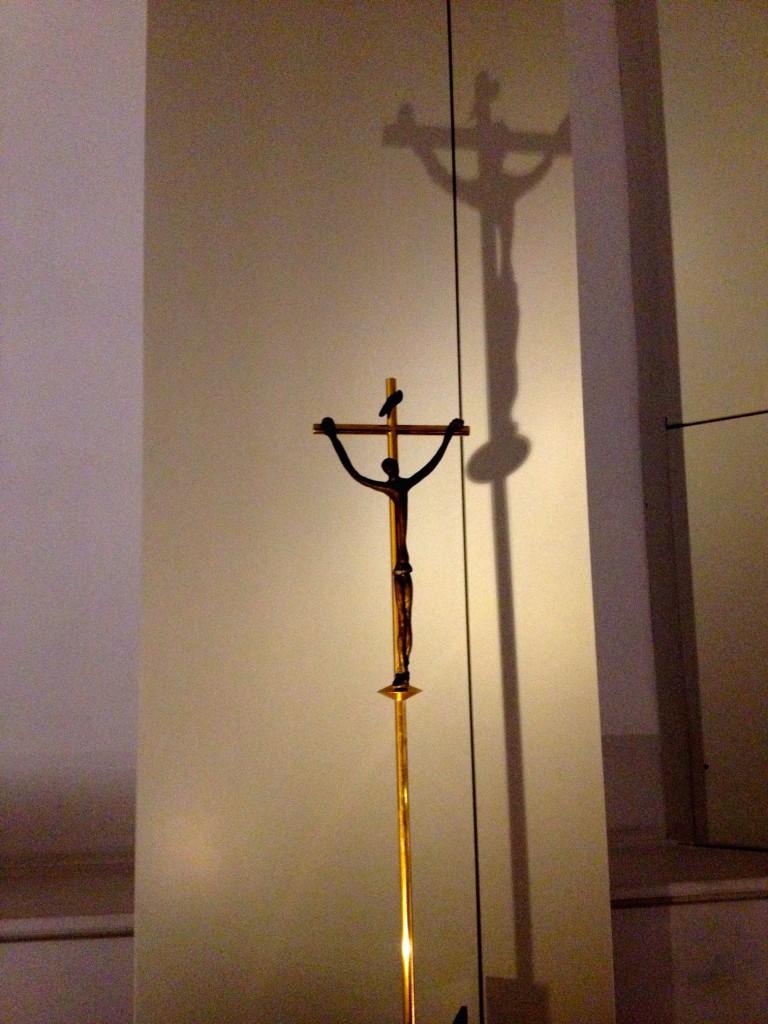
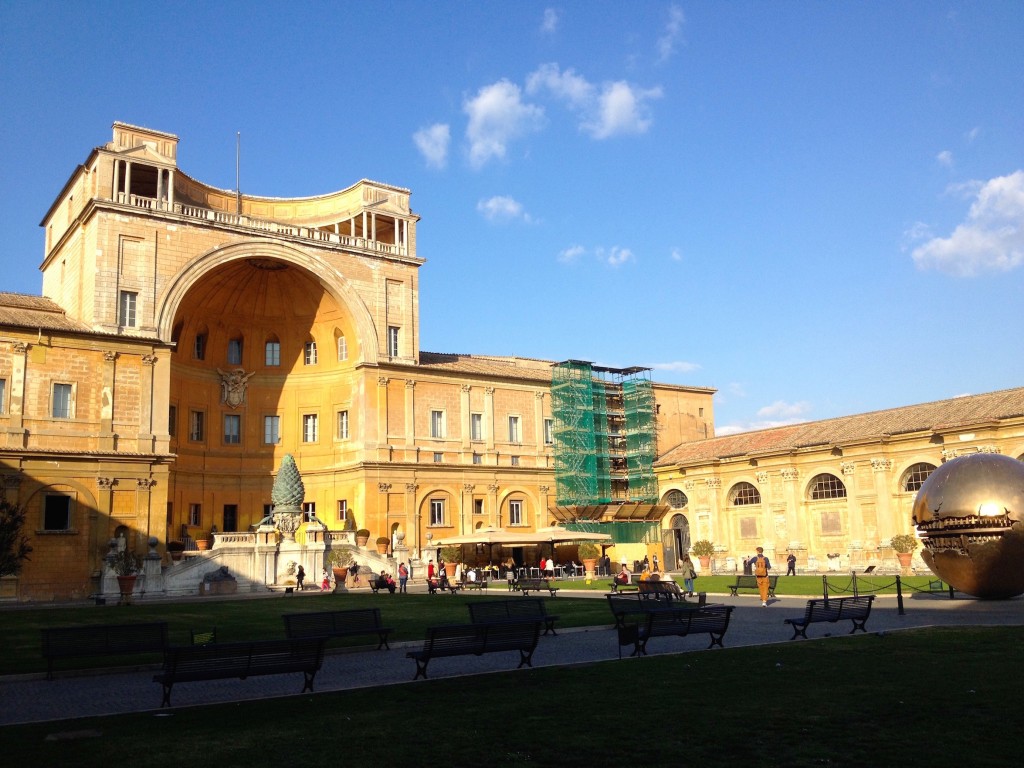
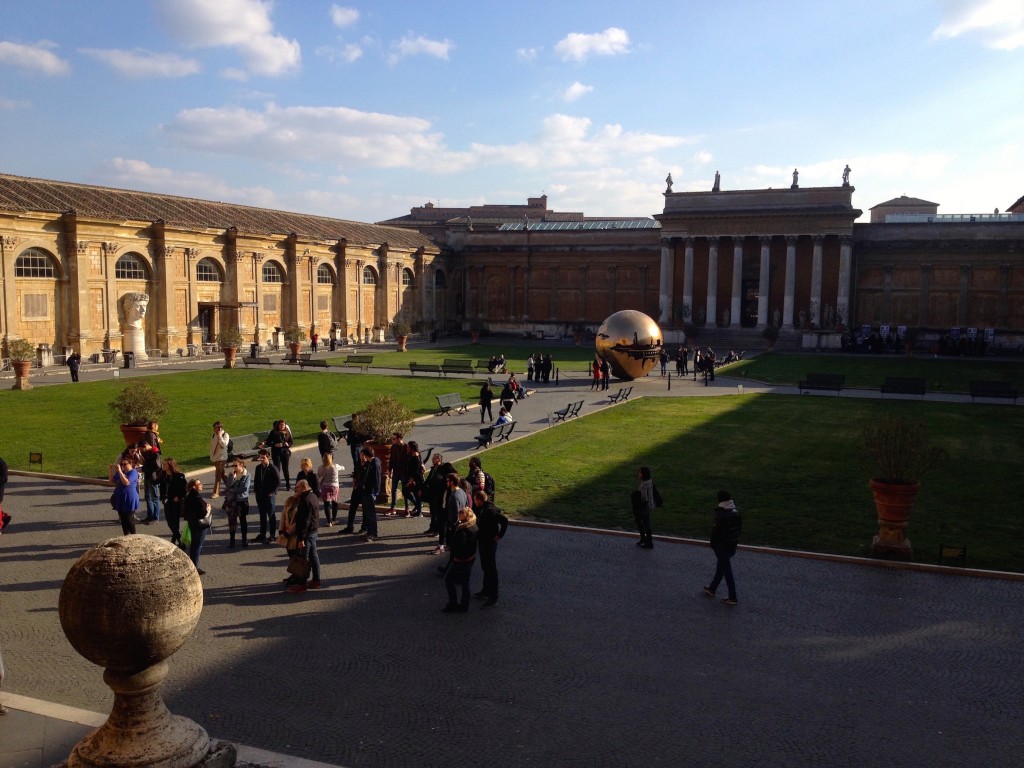
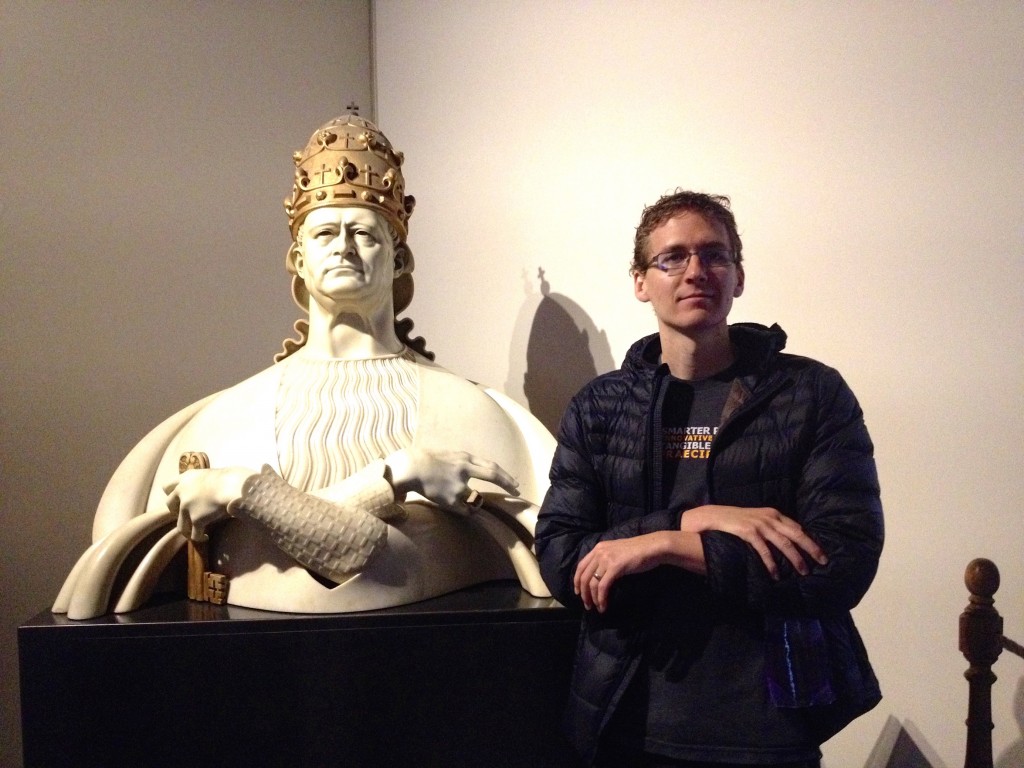
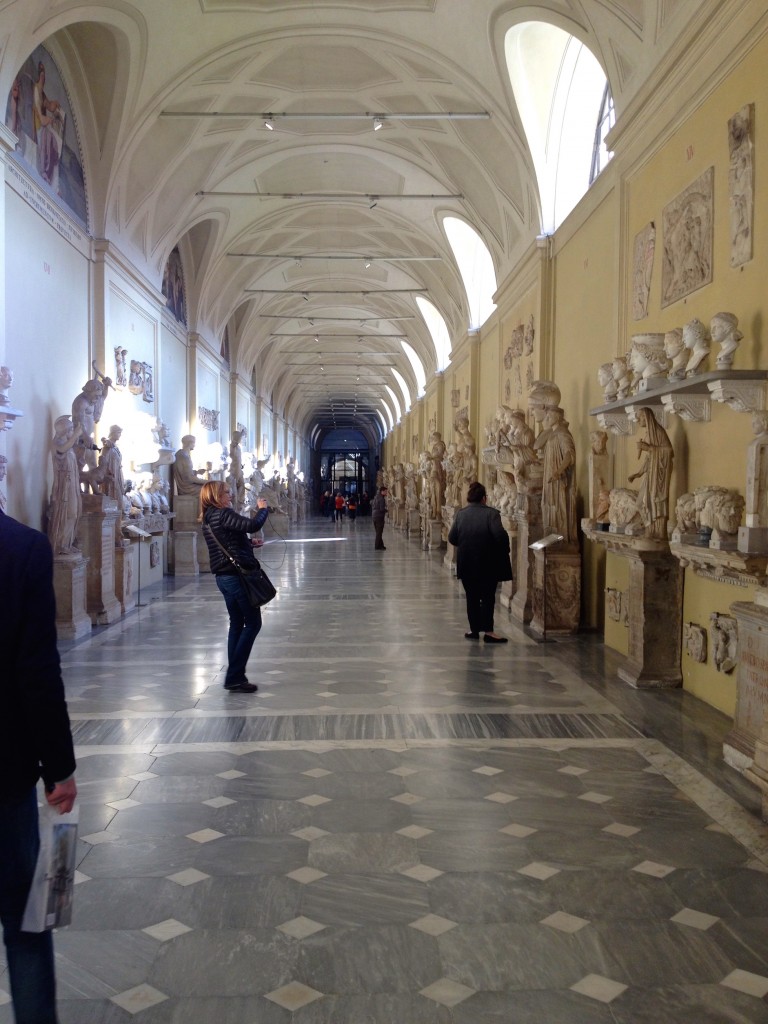
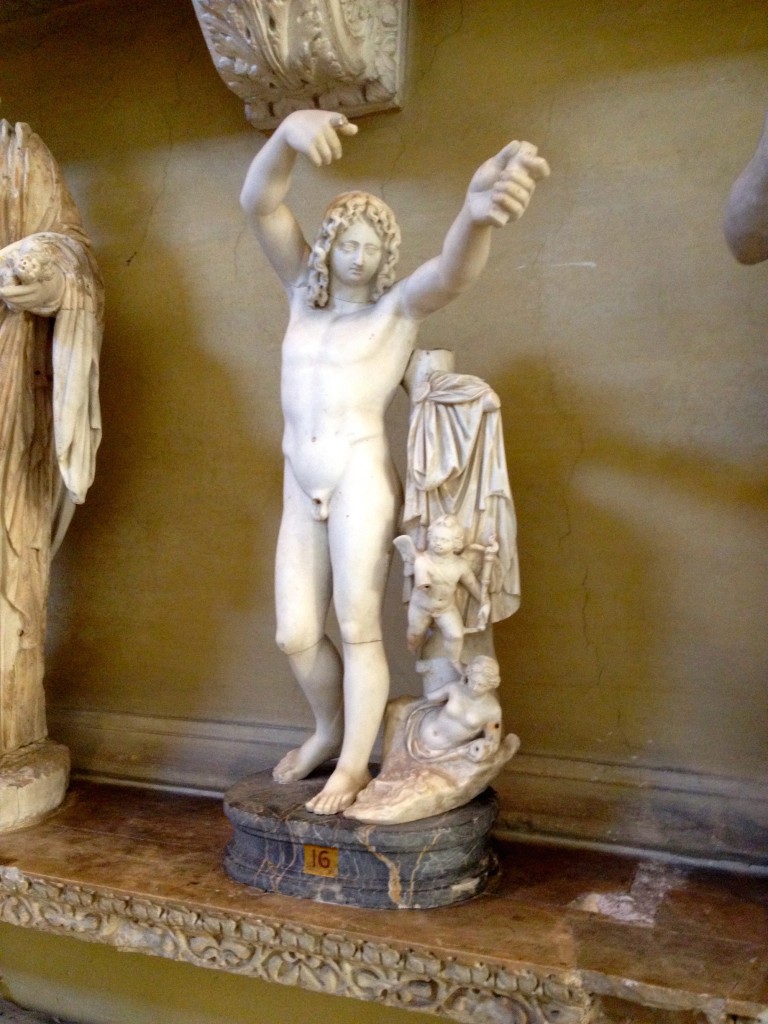
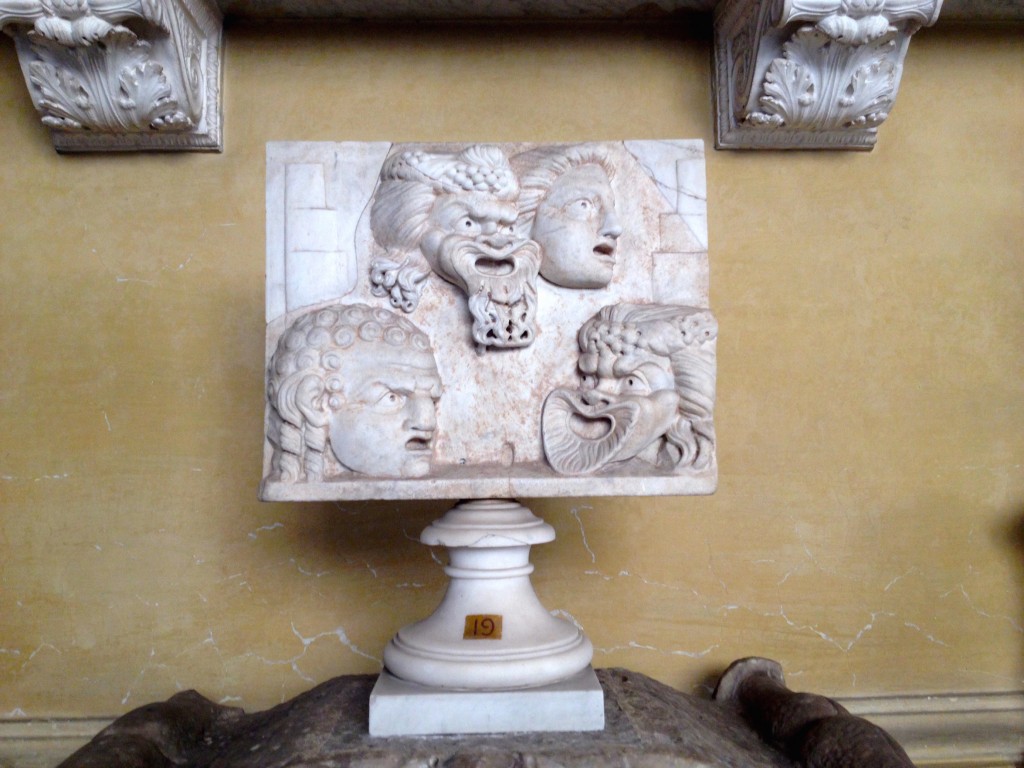
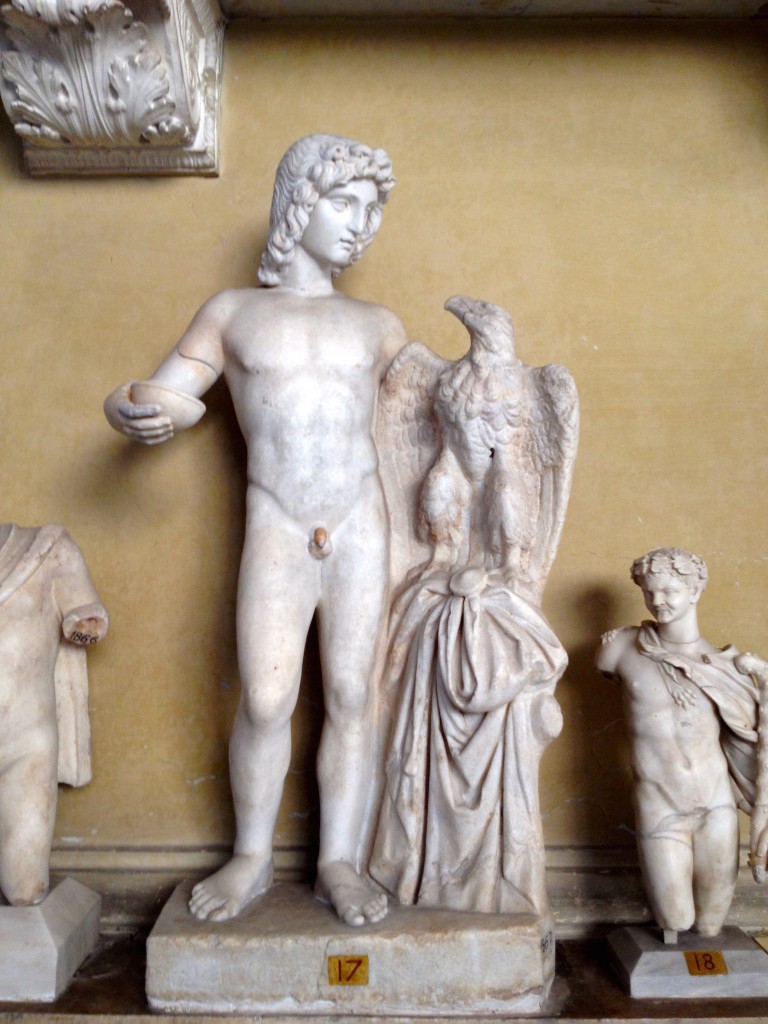
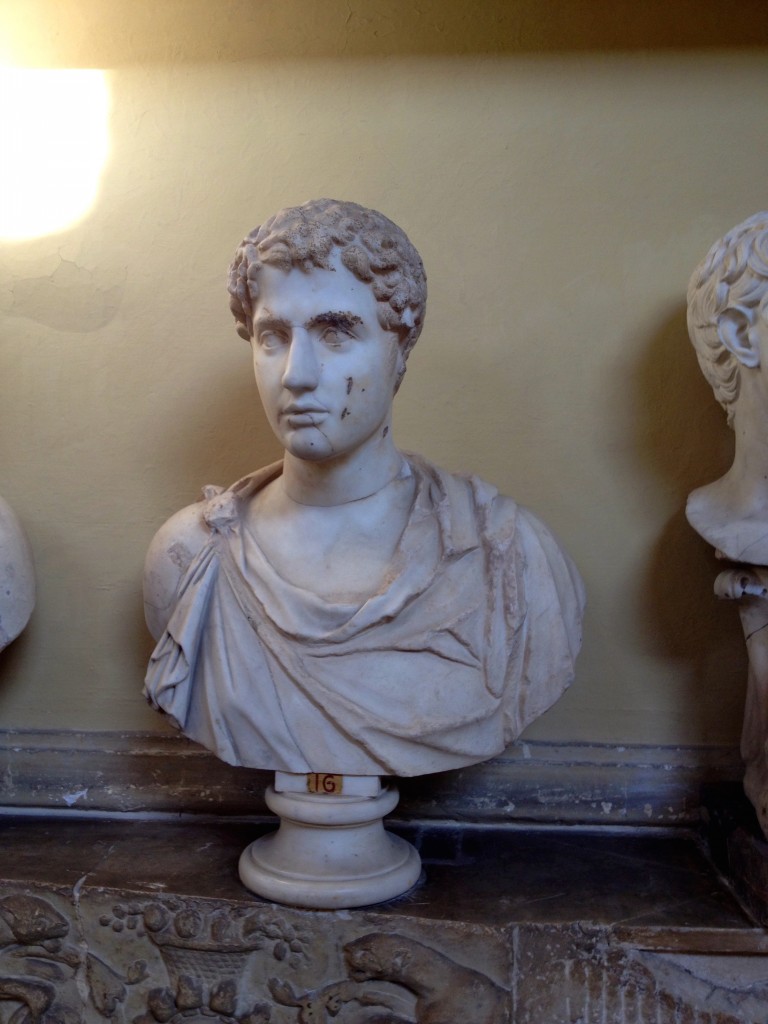
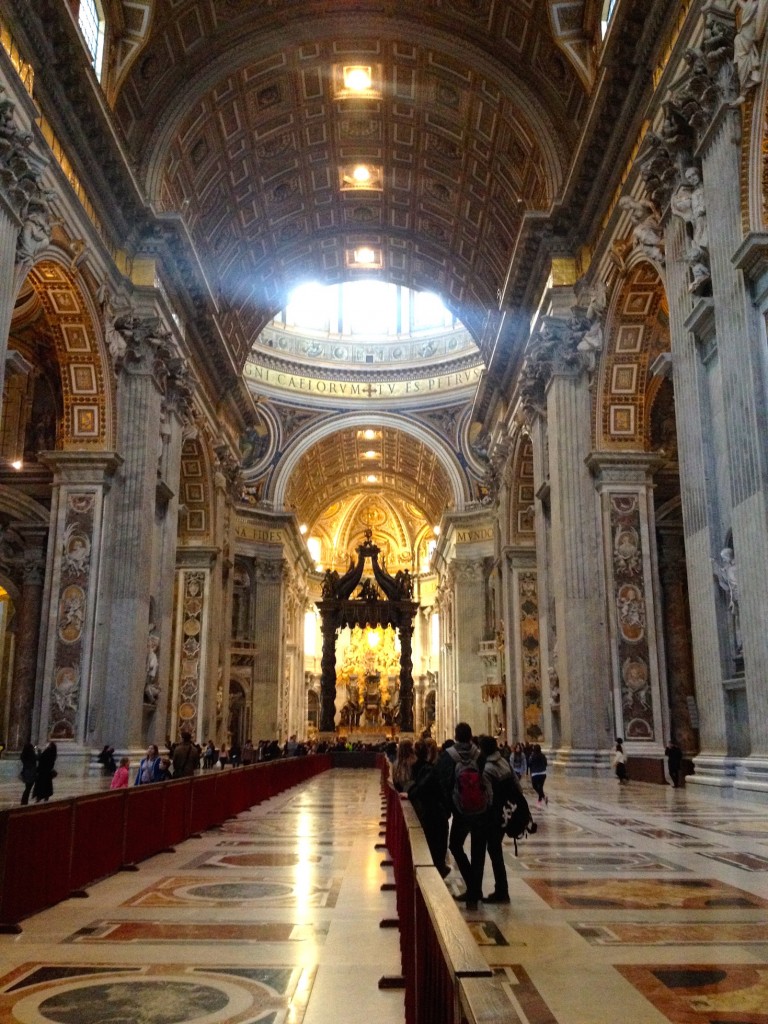
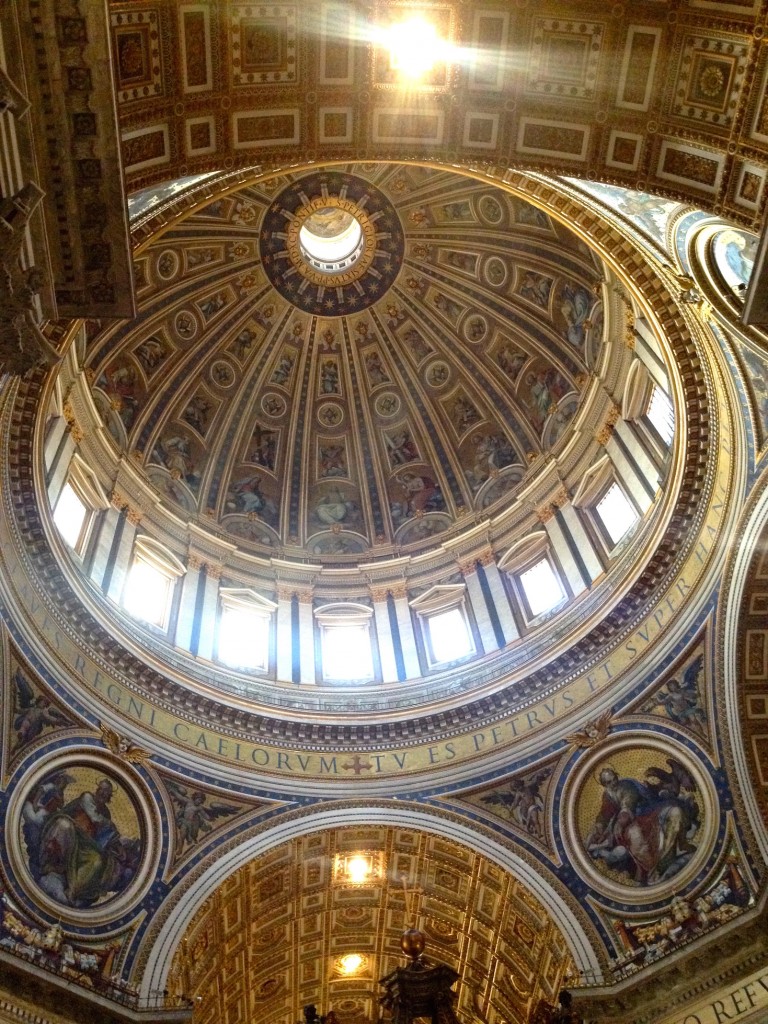
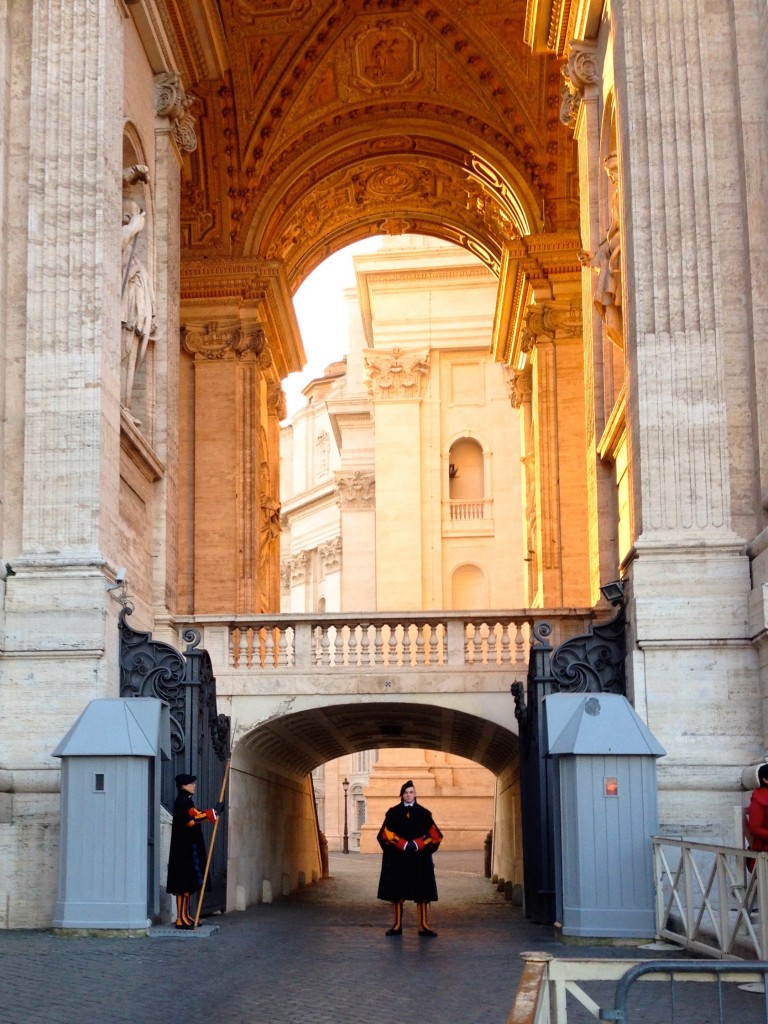
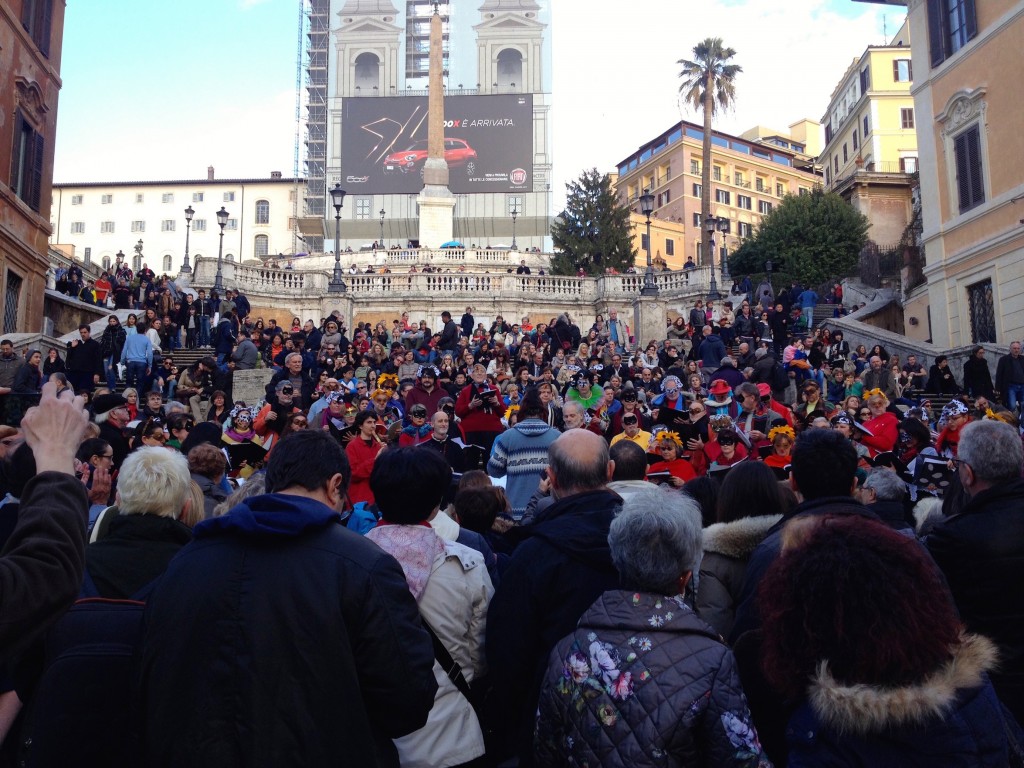
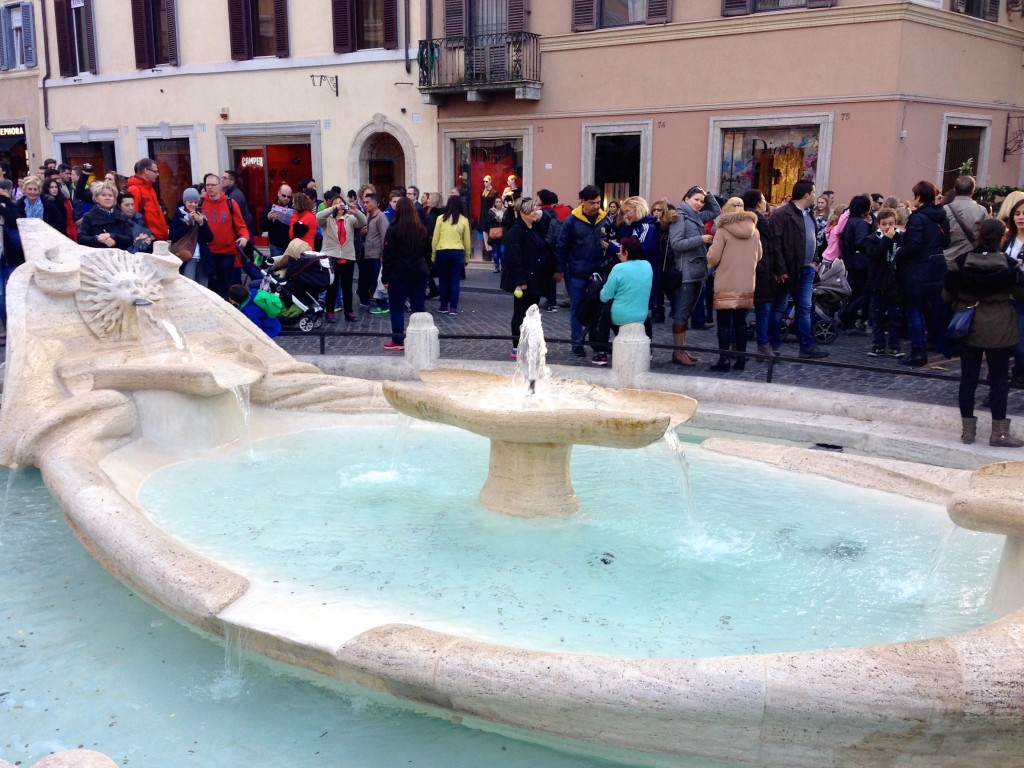
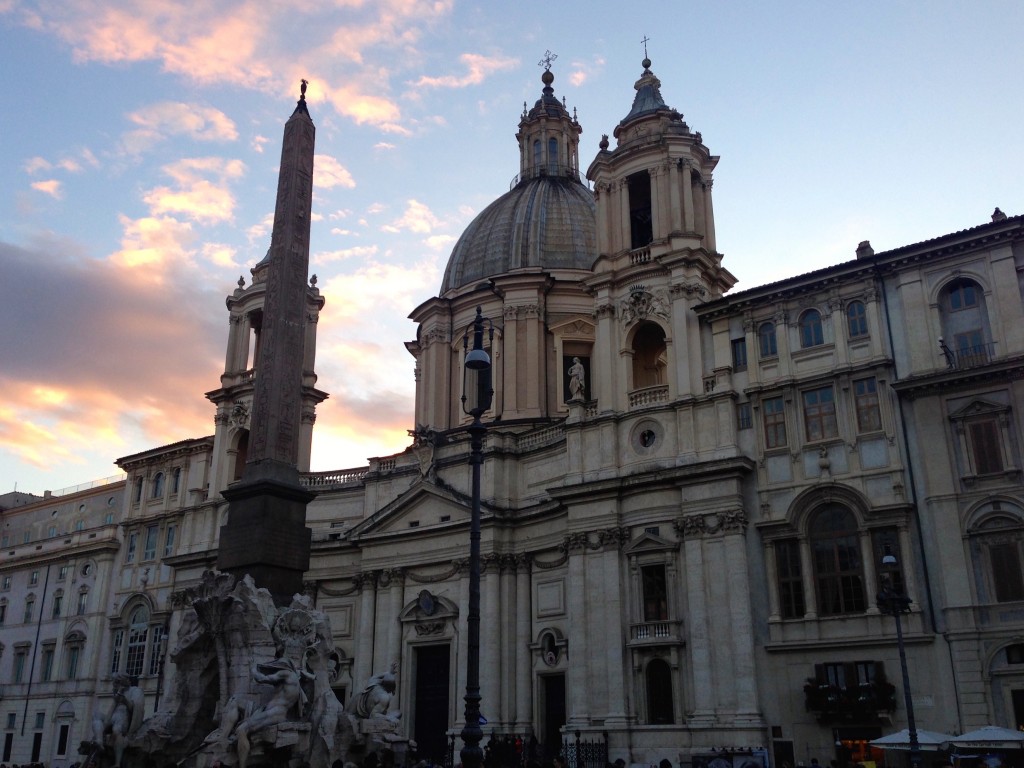
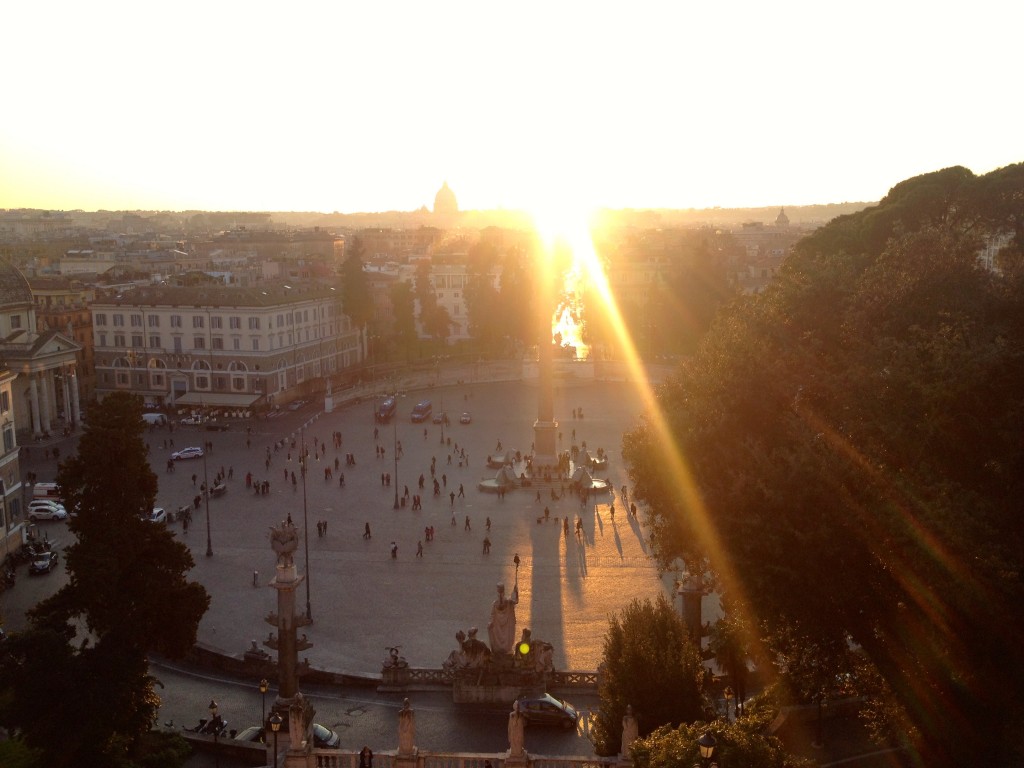
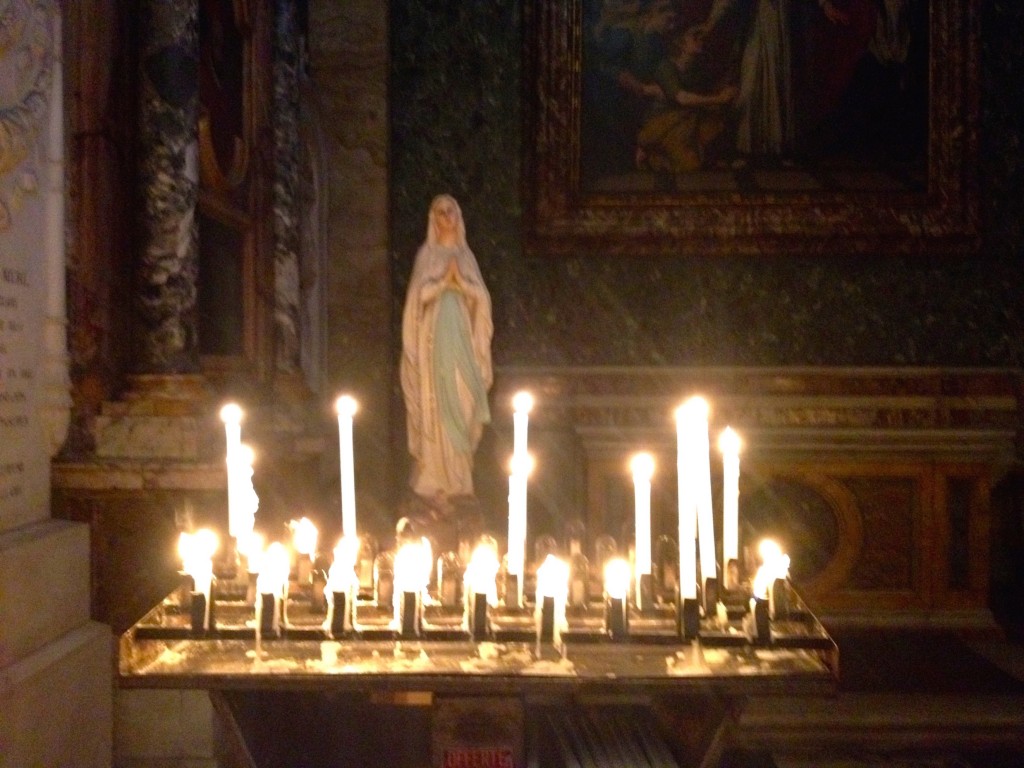
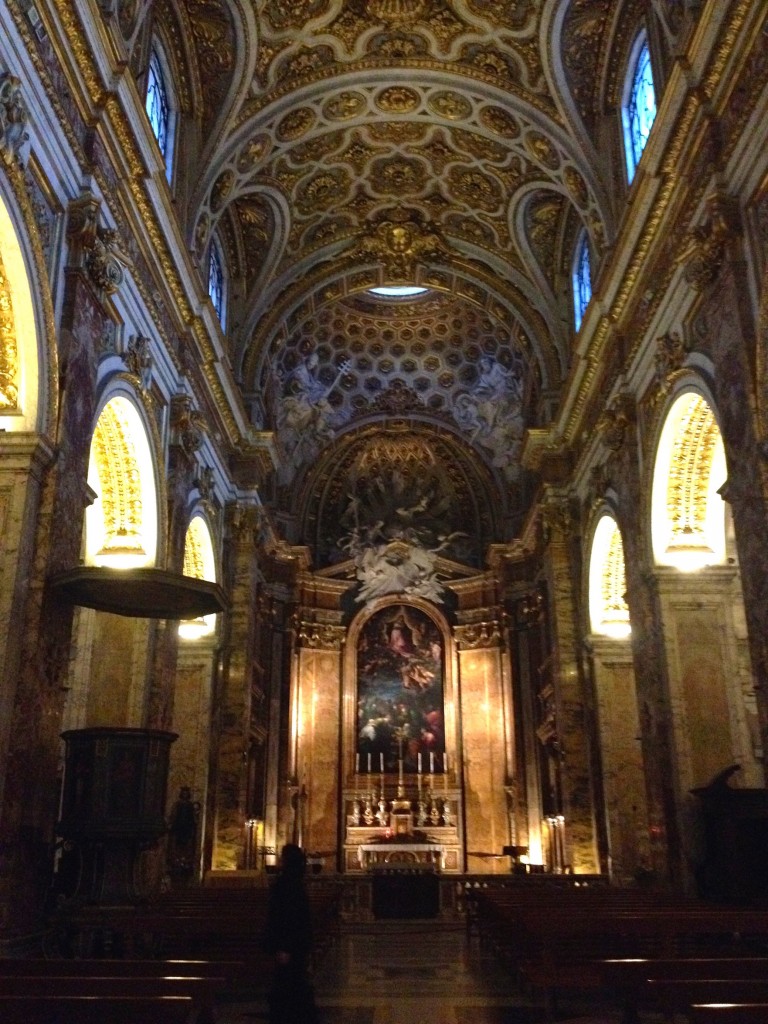
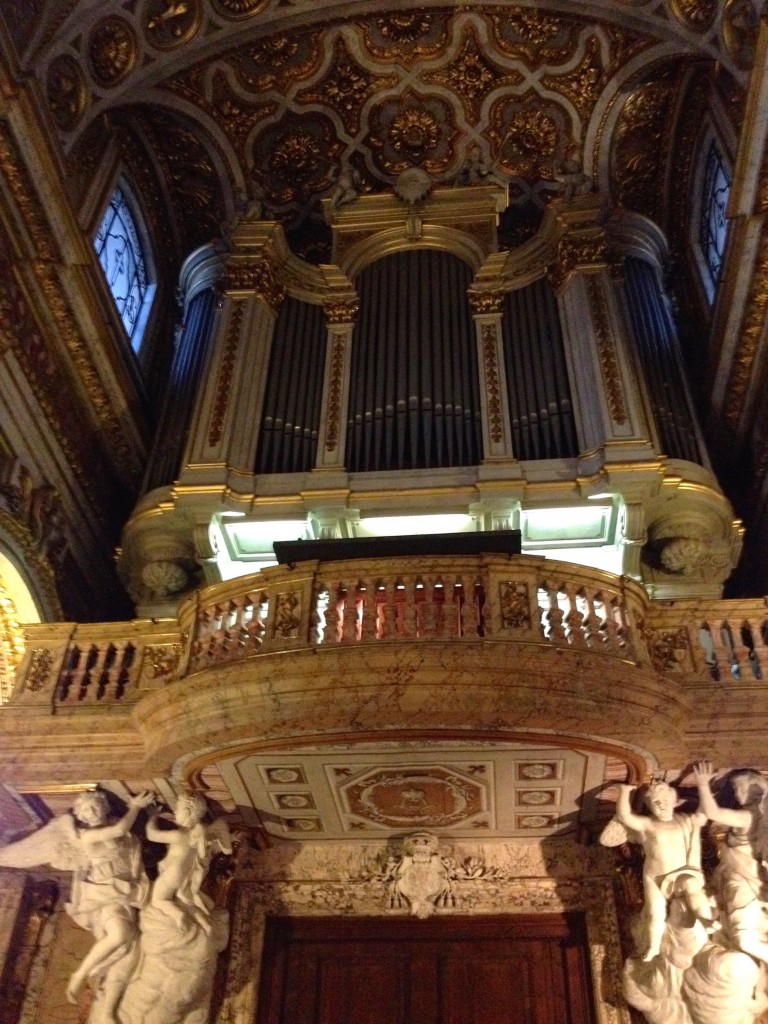
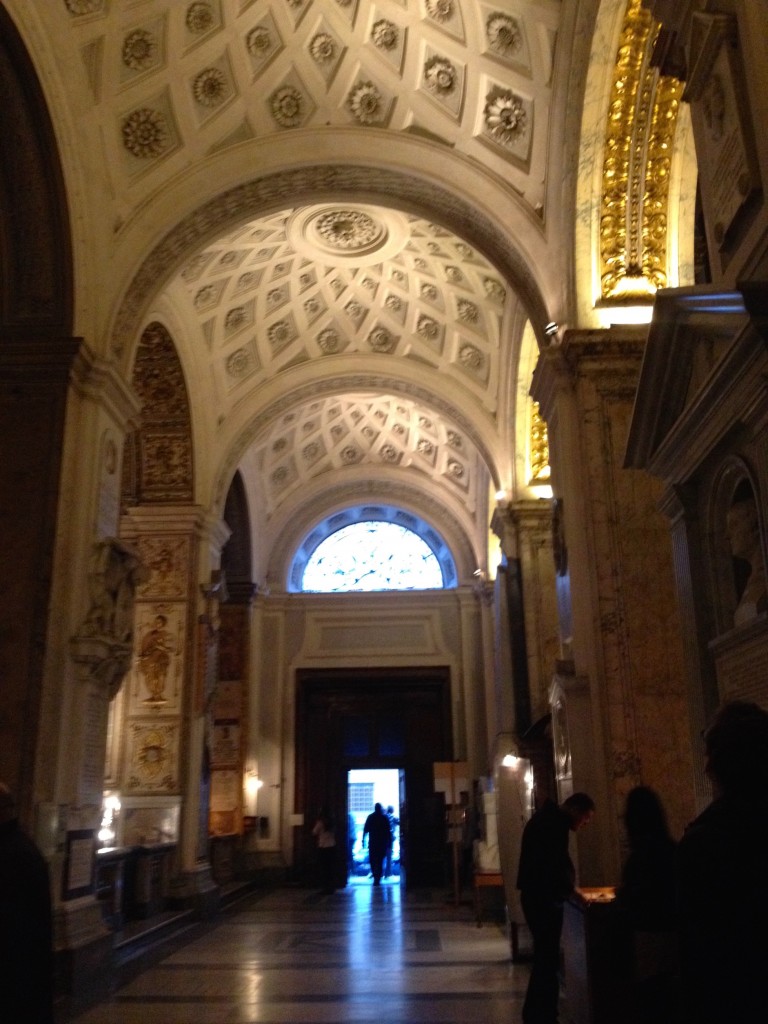
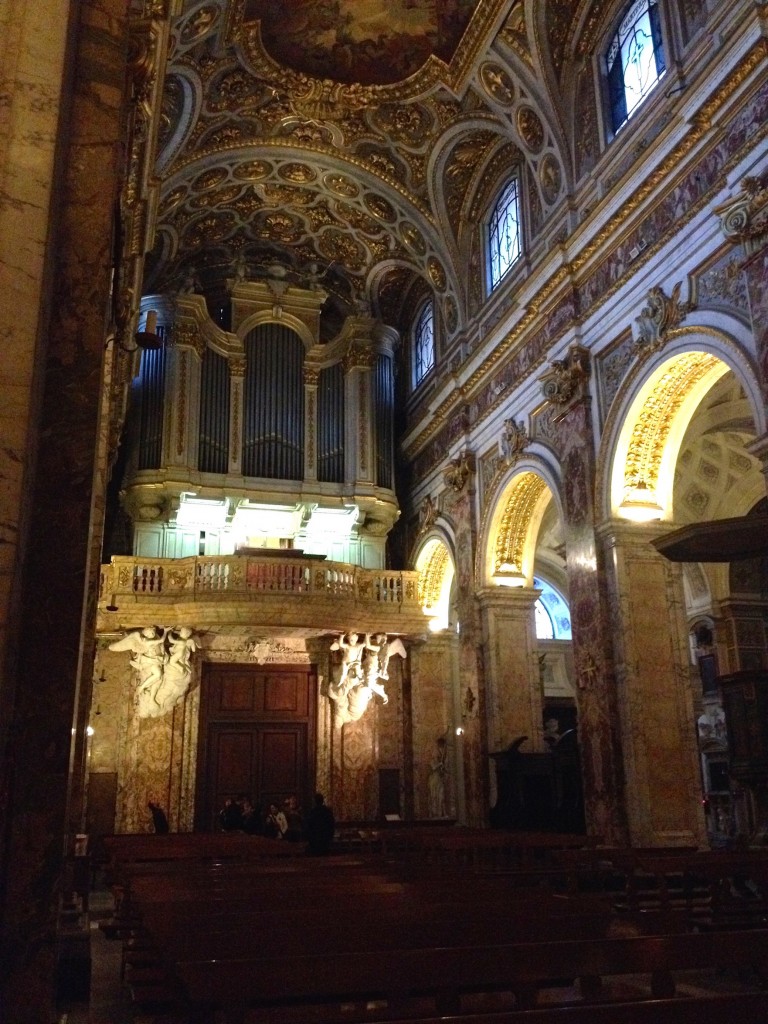
Mel,
Again enjoyed reading your blog and looking at your pics. Rick and I have visited Rome and loved it! I was not there long enough……!! My favorite of course was ST Peters Basilica….and of course being catholic did attend mass which was a highlight for me!! Words cannot express my feelings other than it was awesome!! Looking forward to reading more of your travels,, Janie